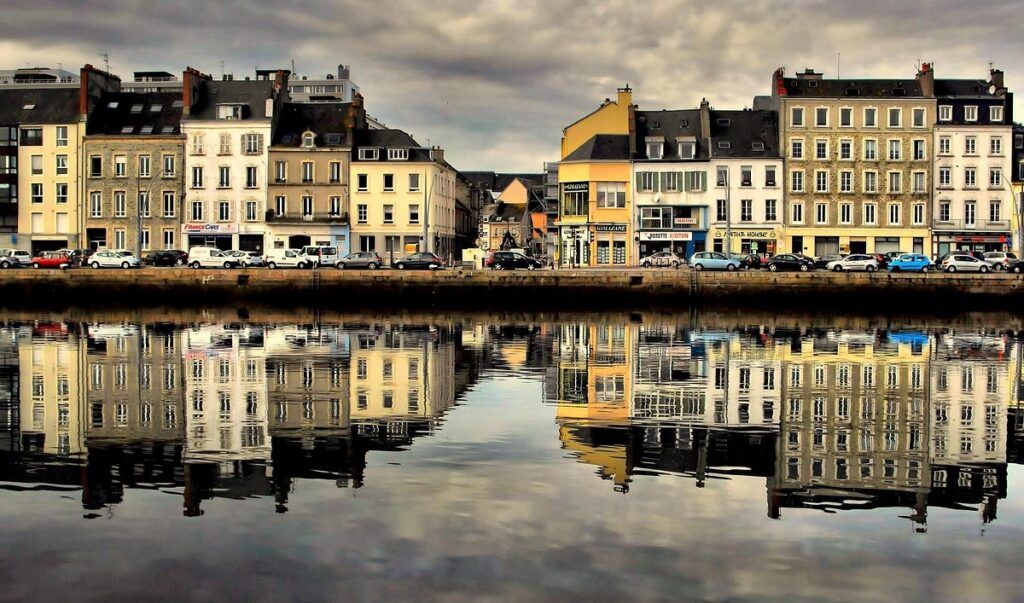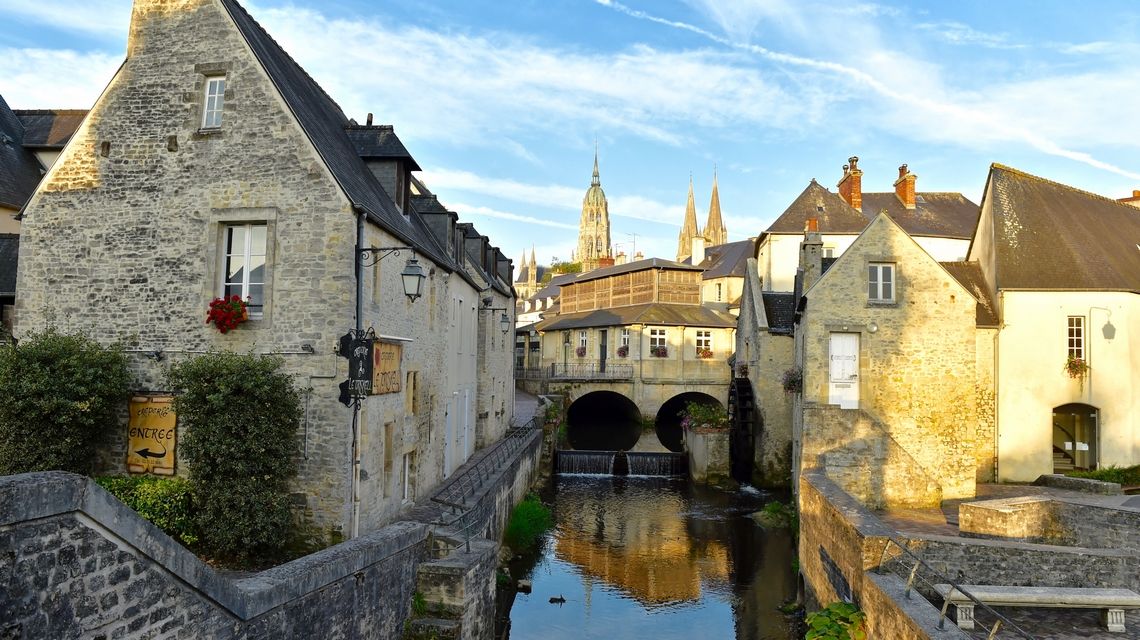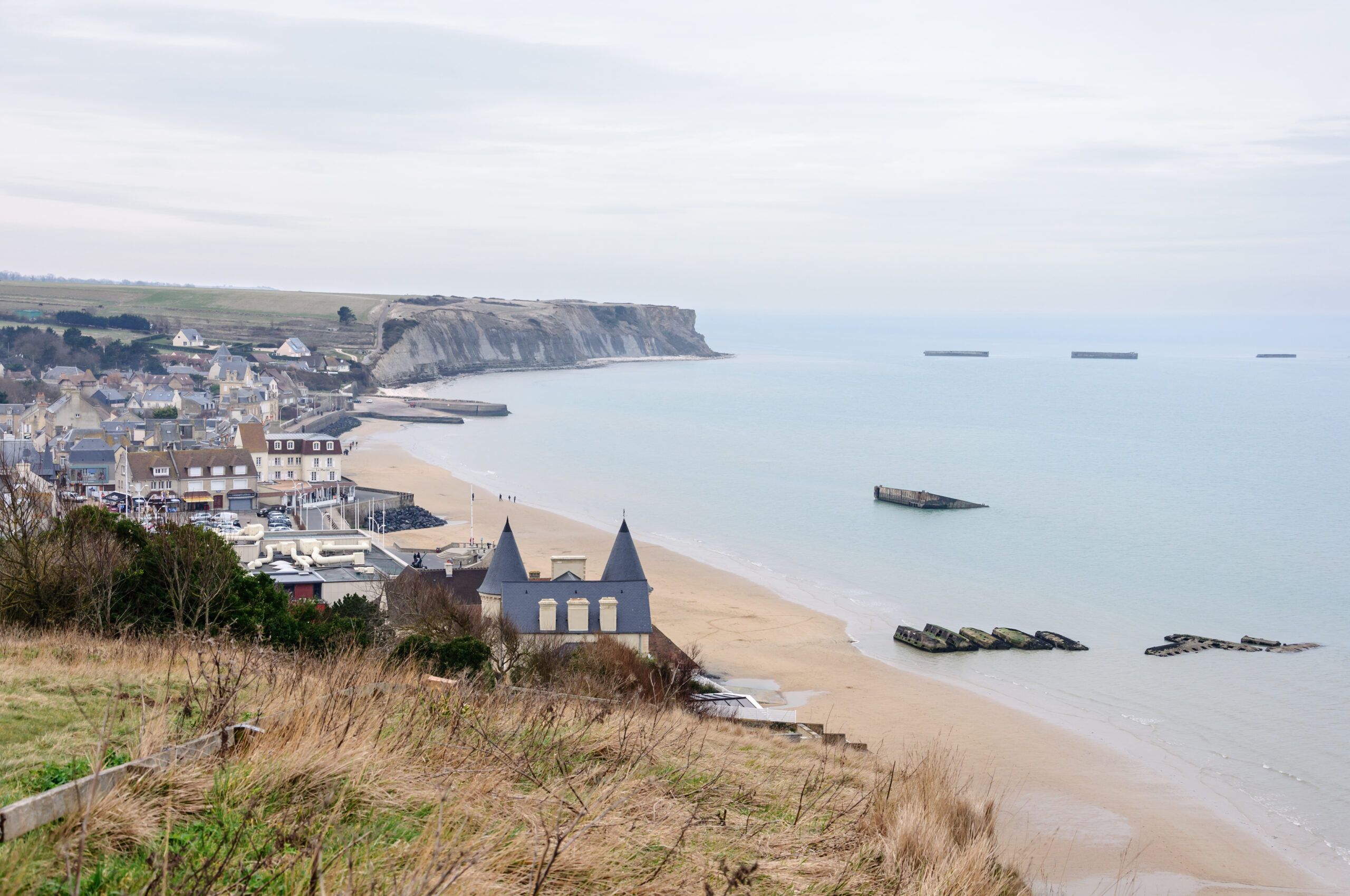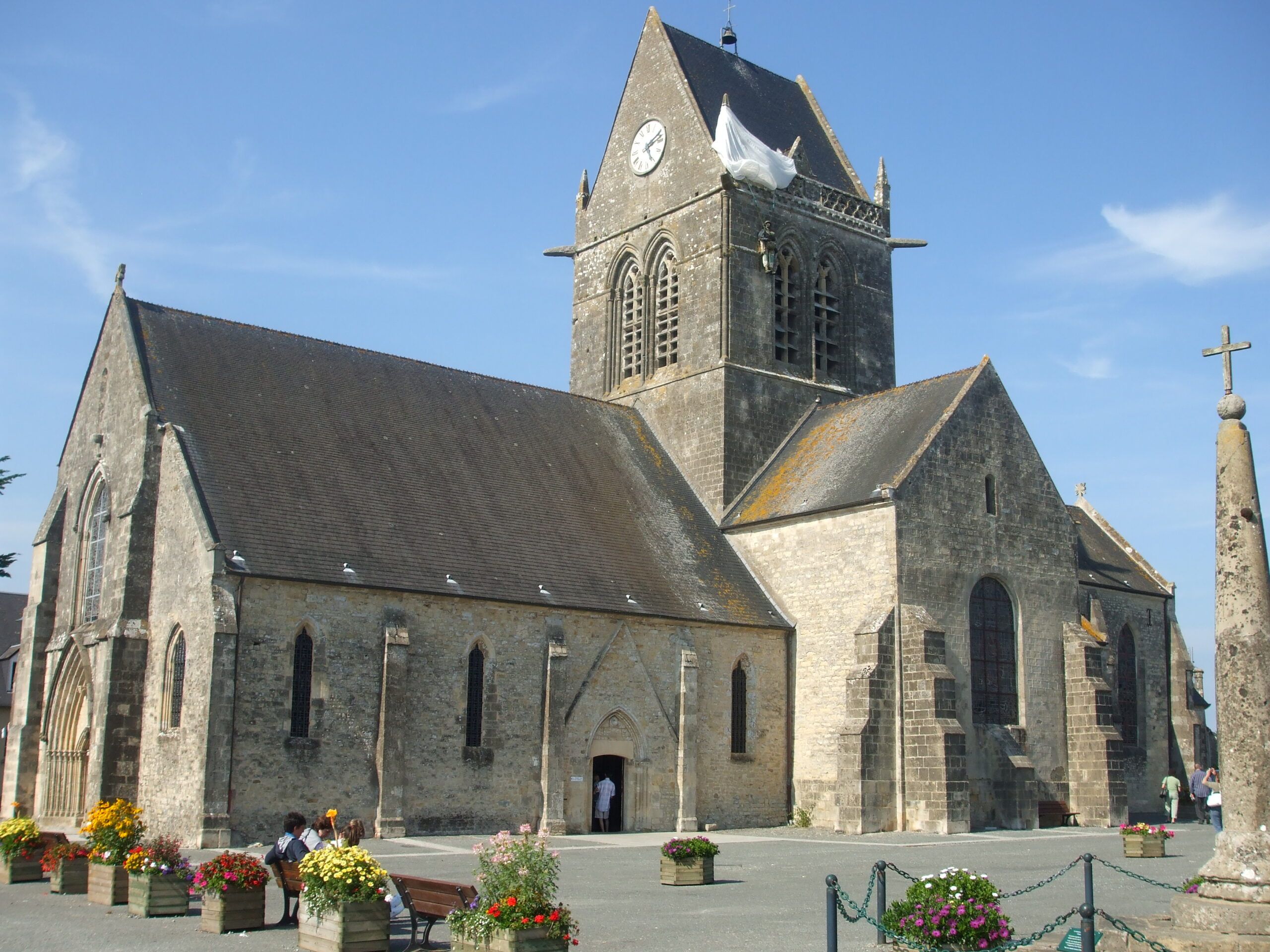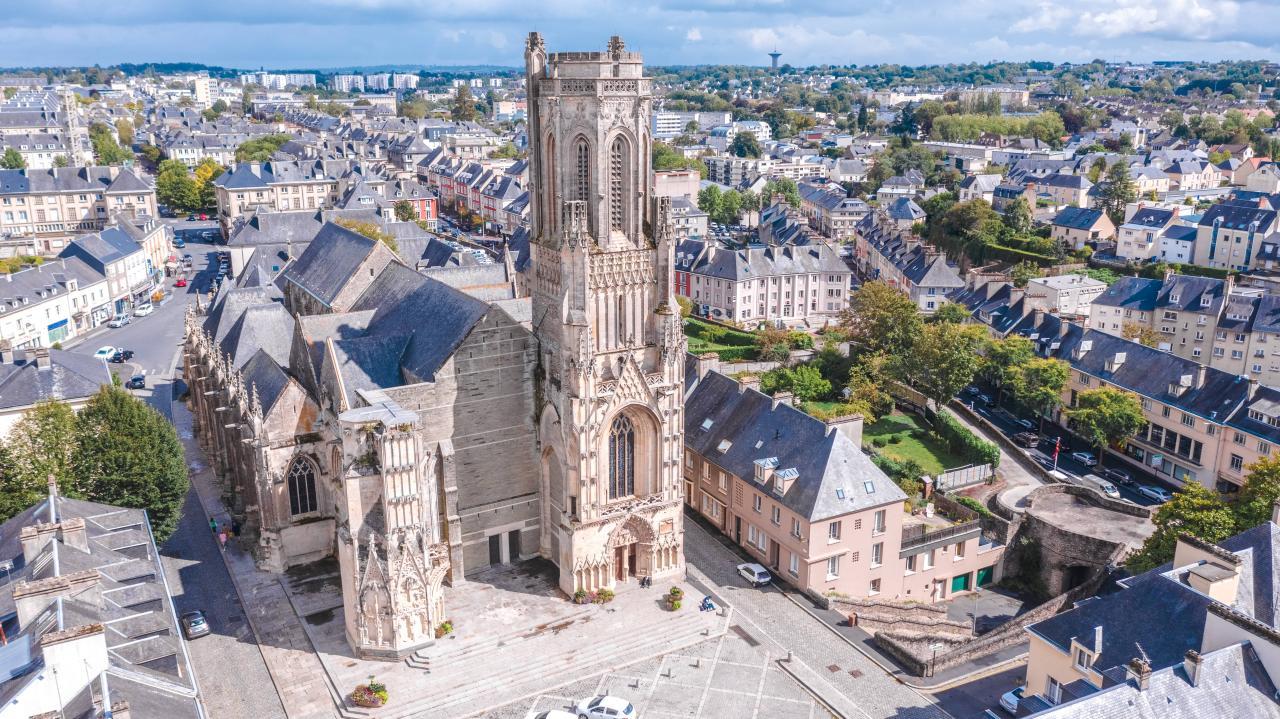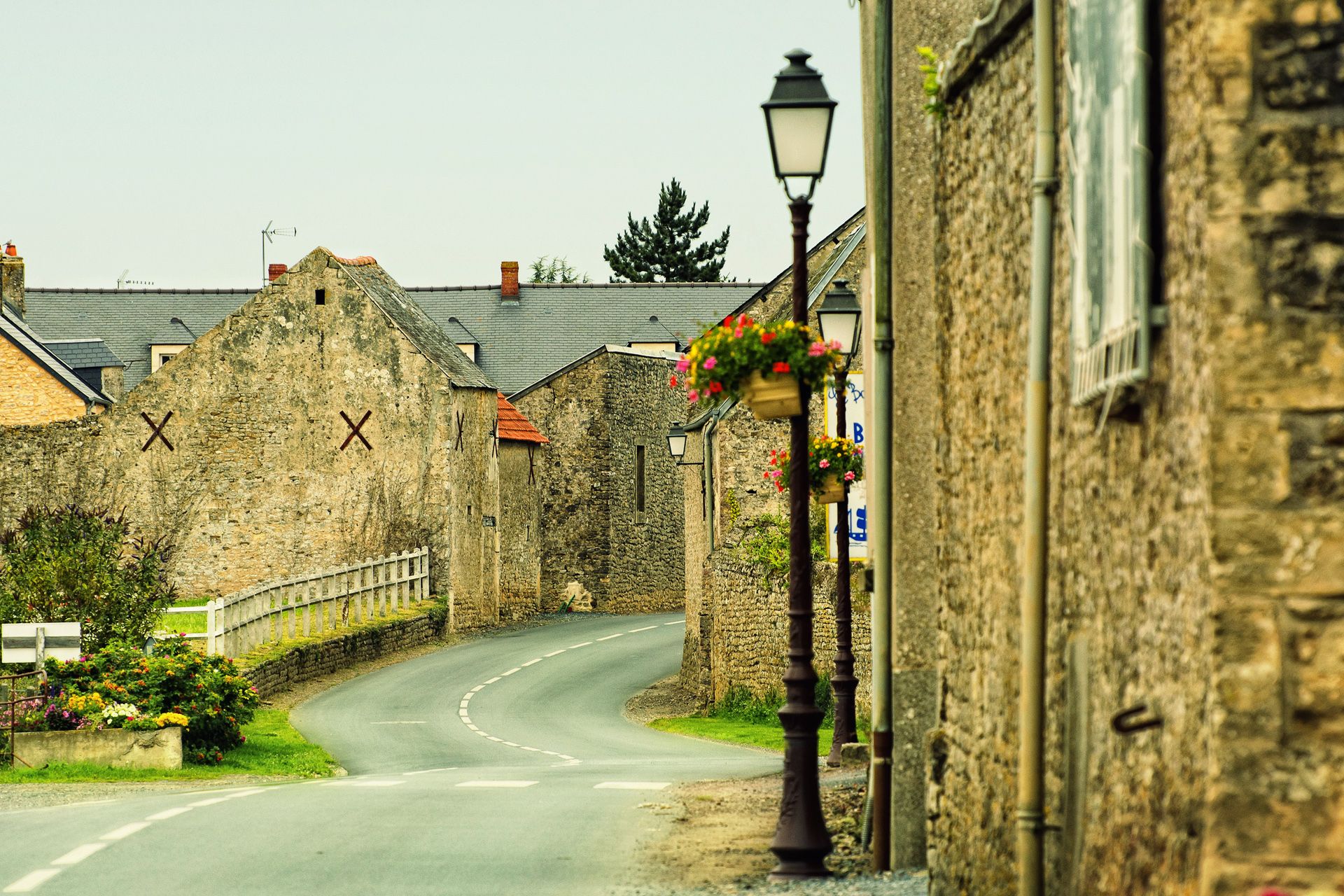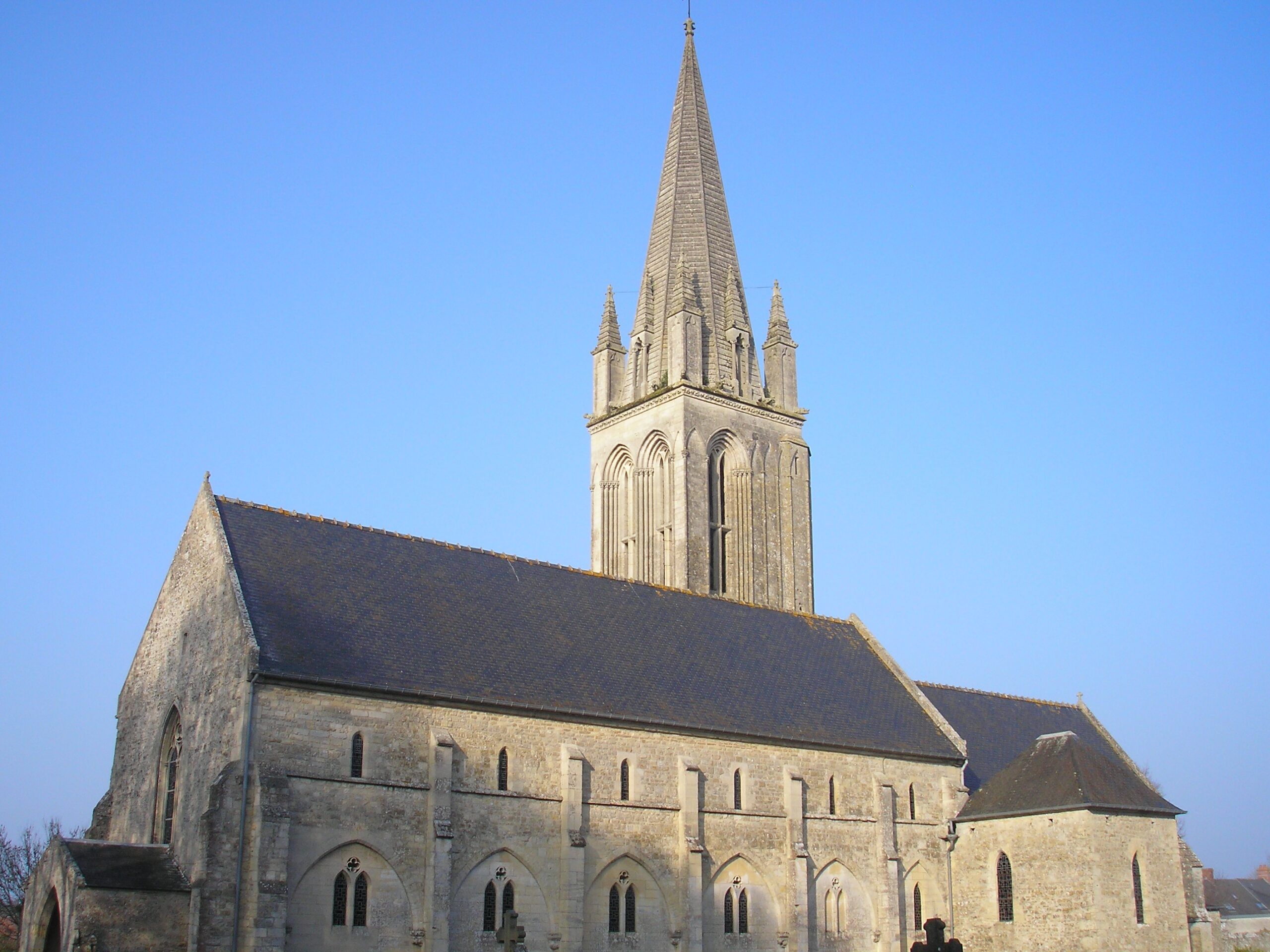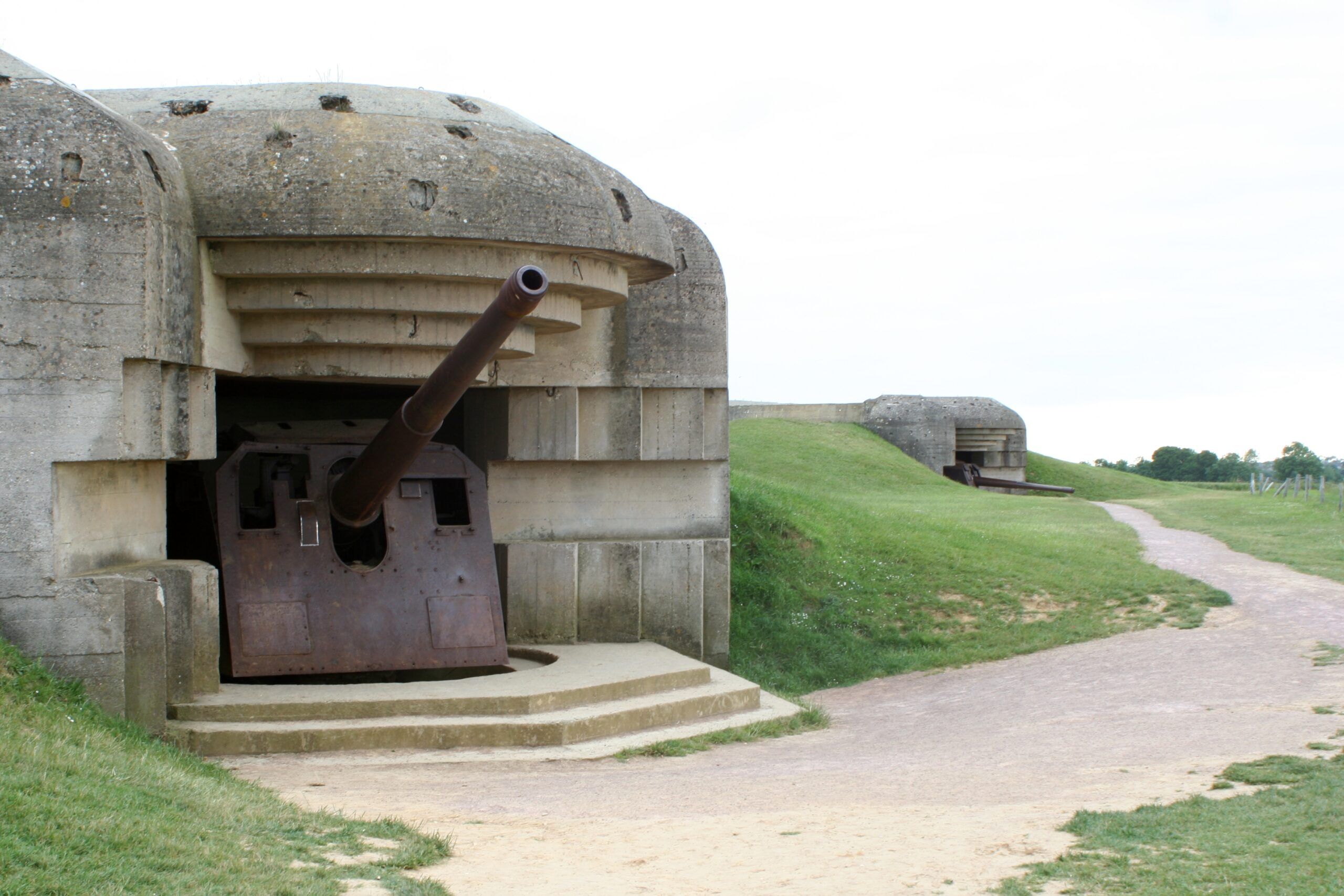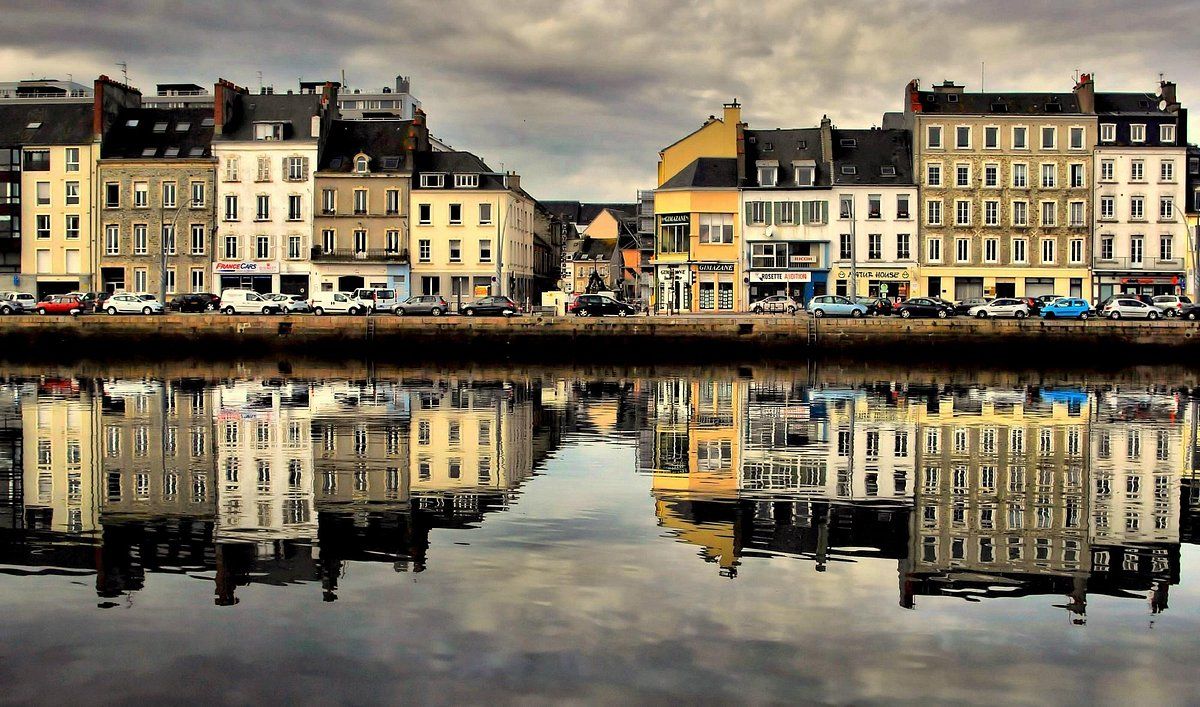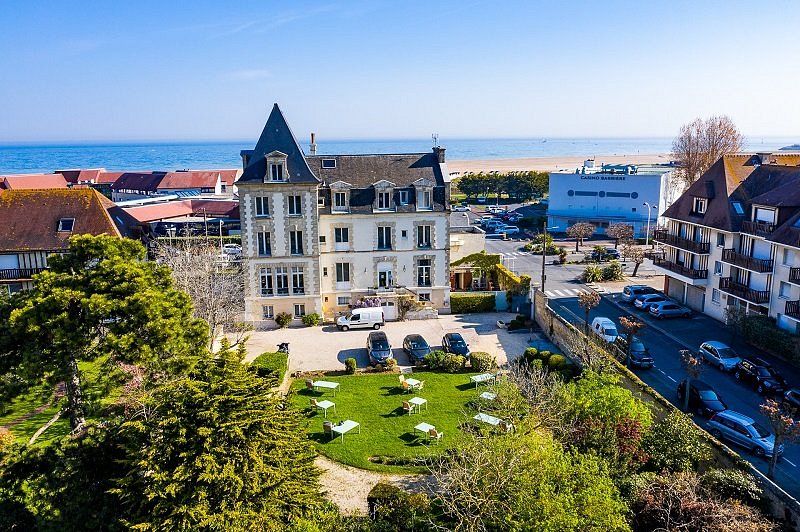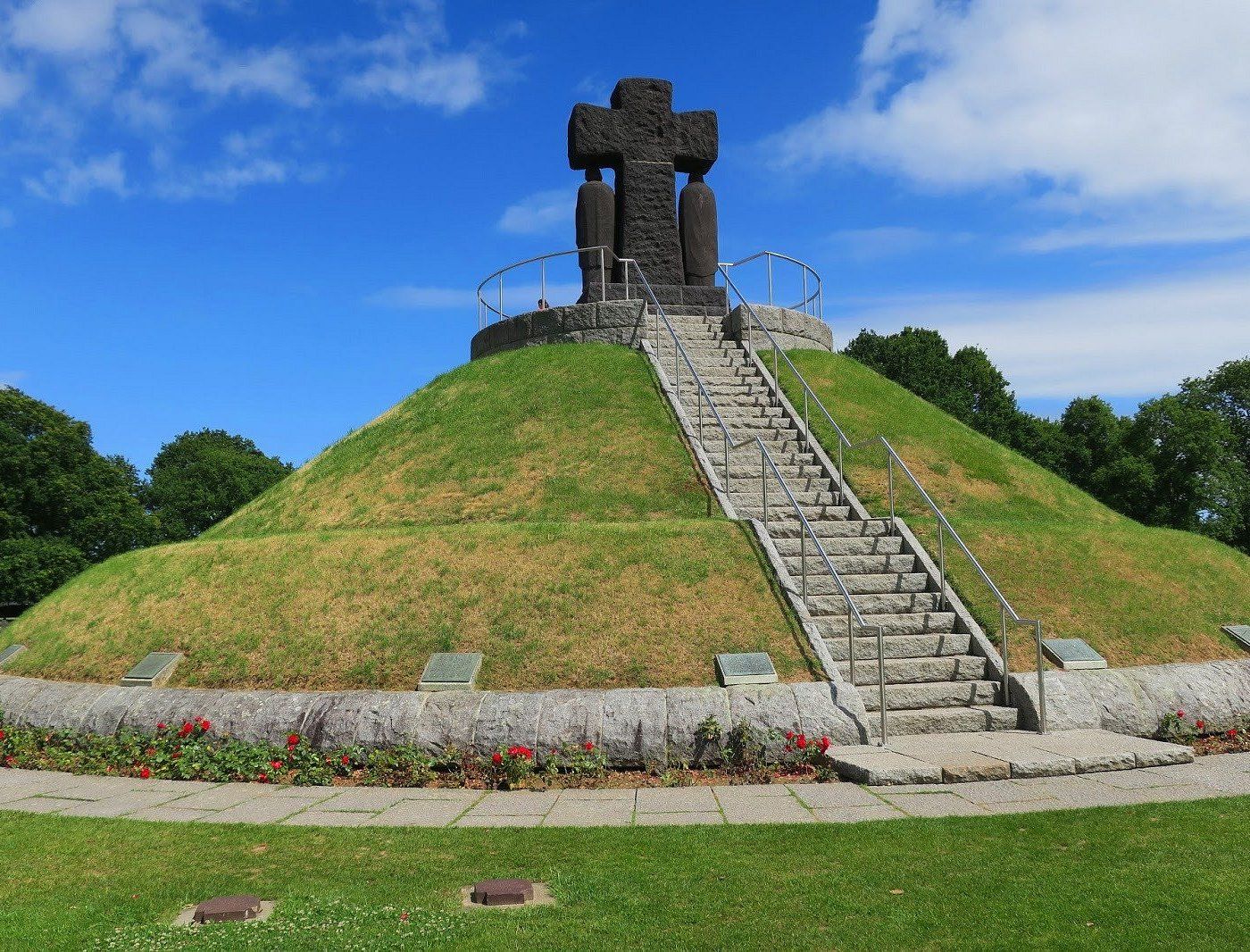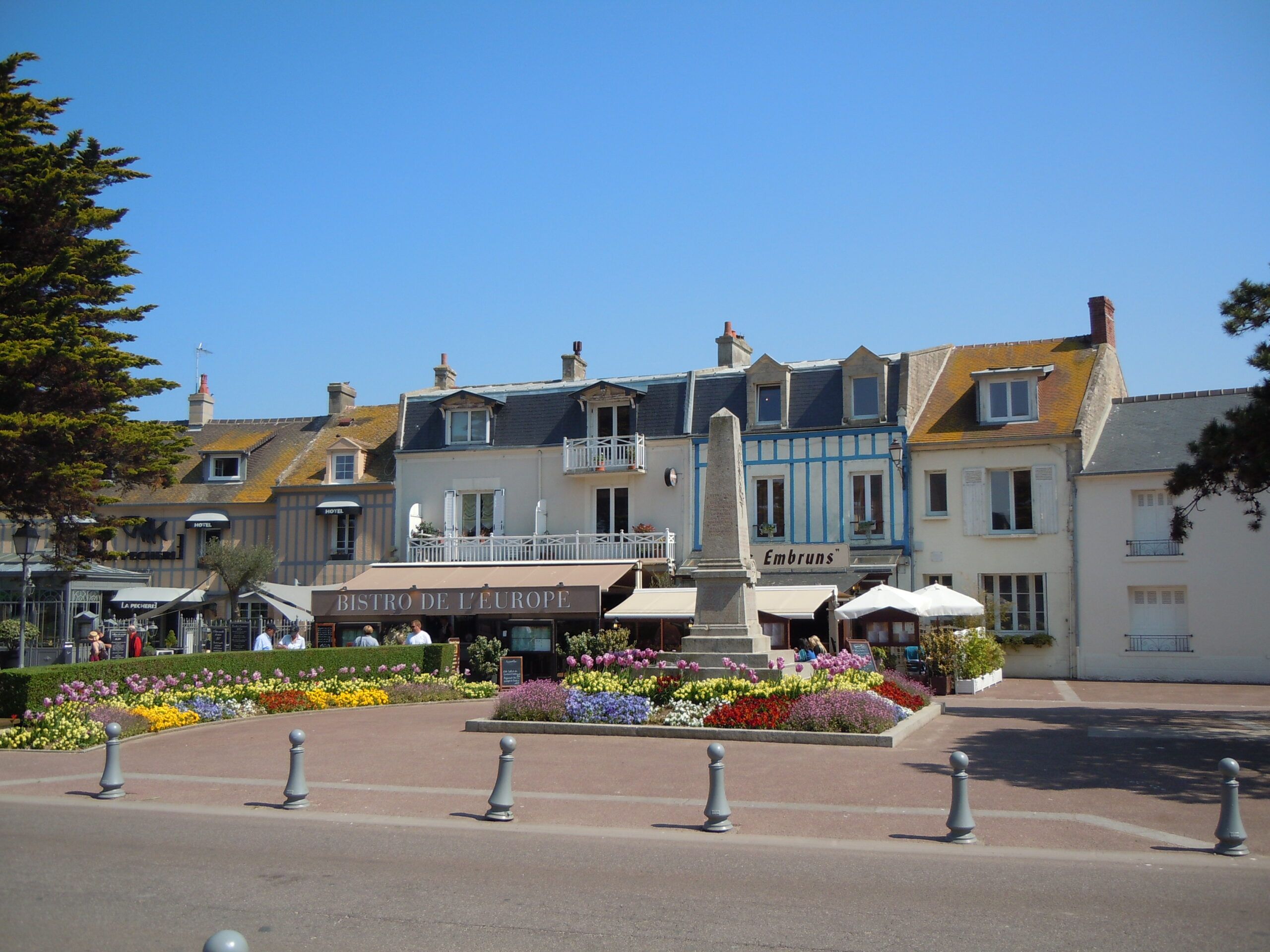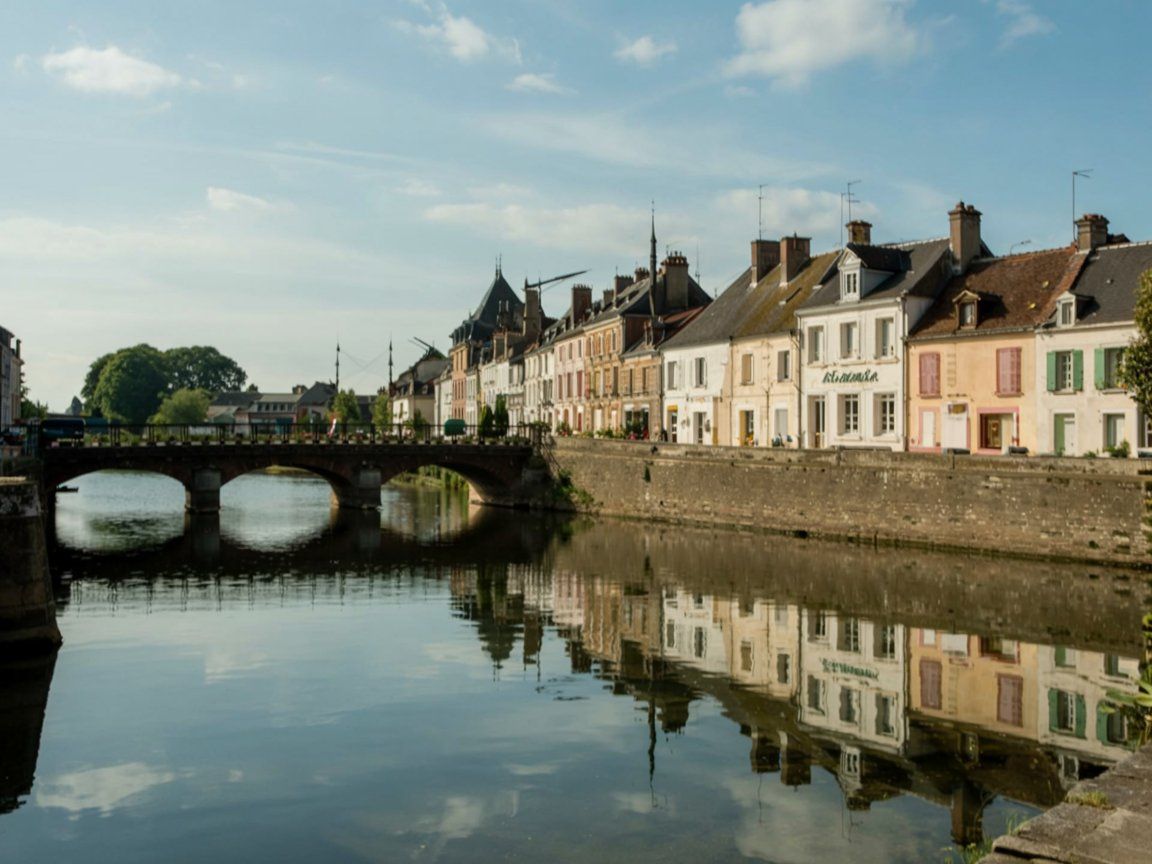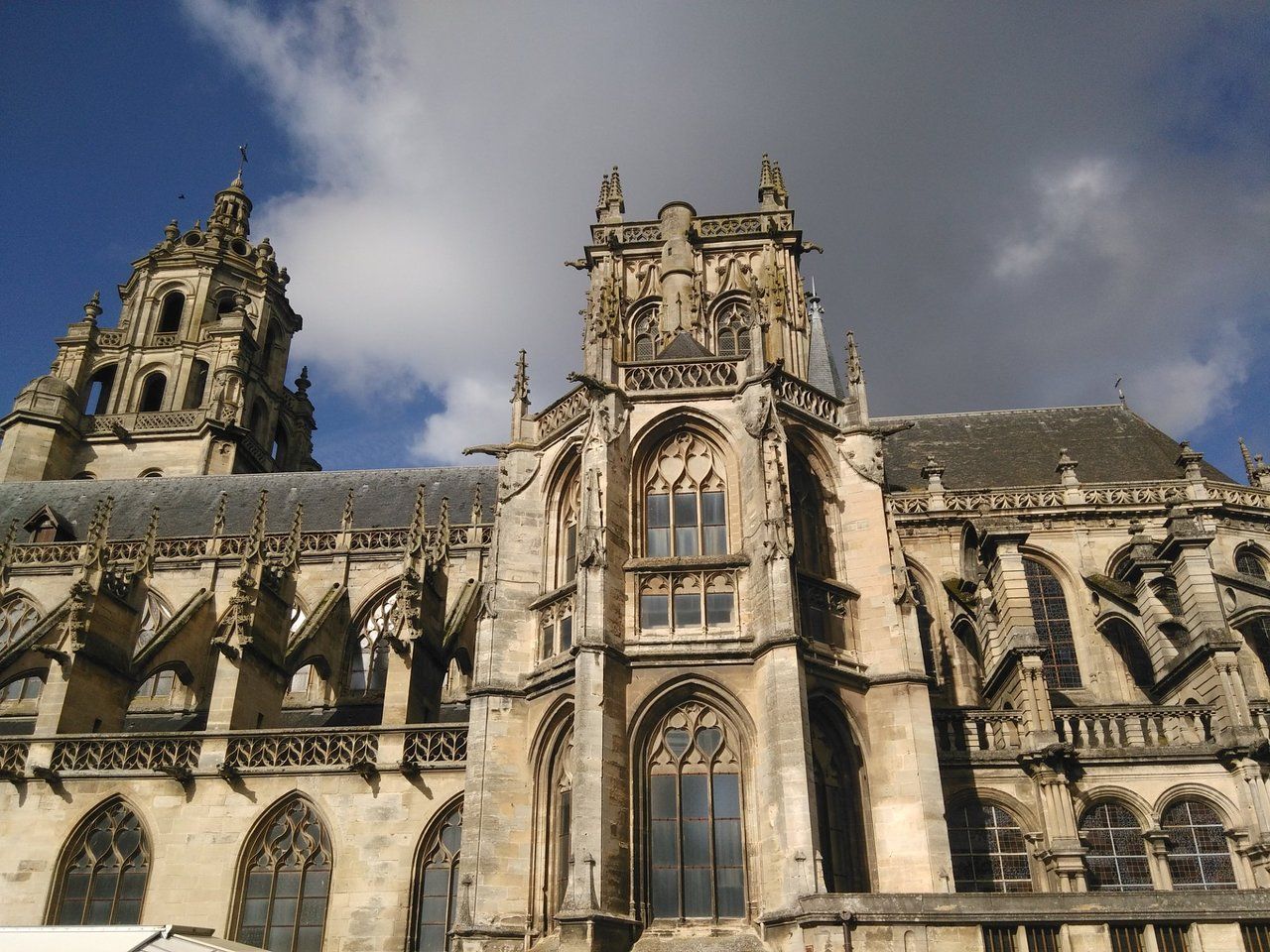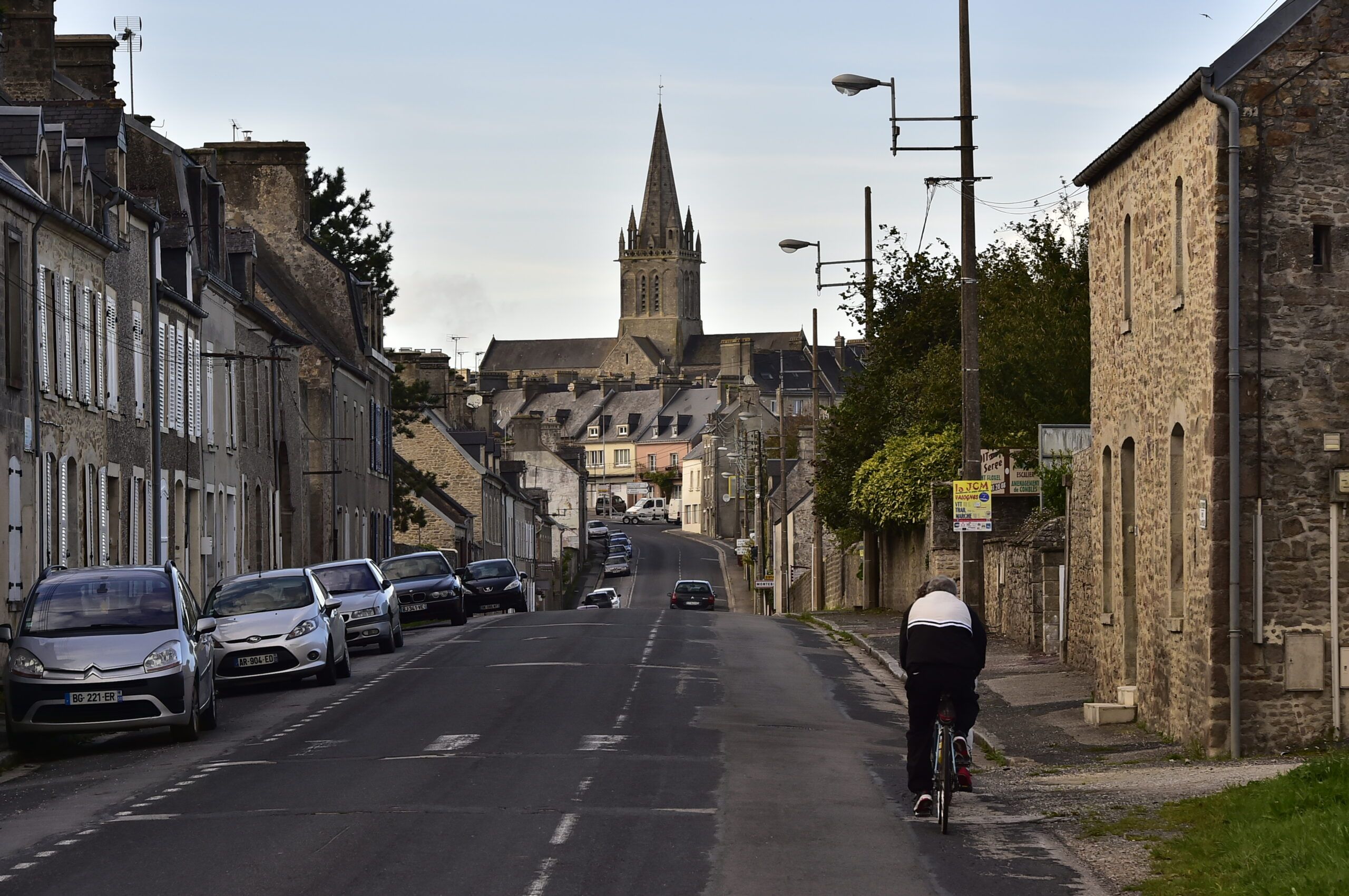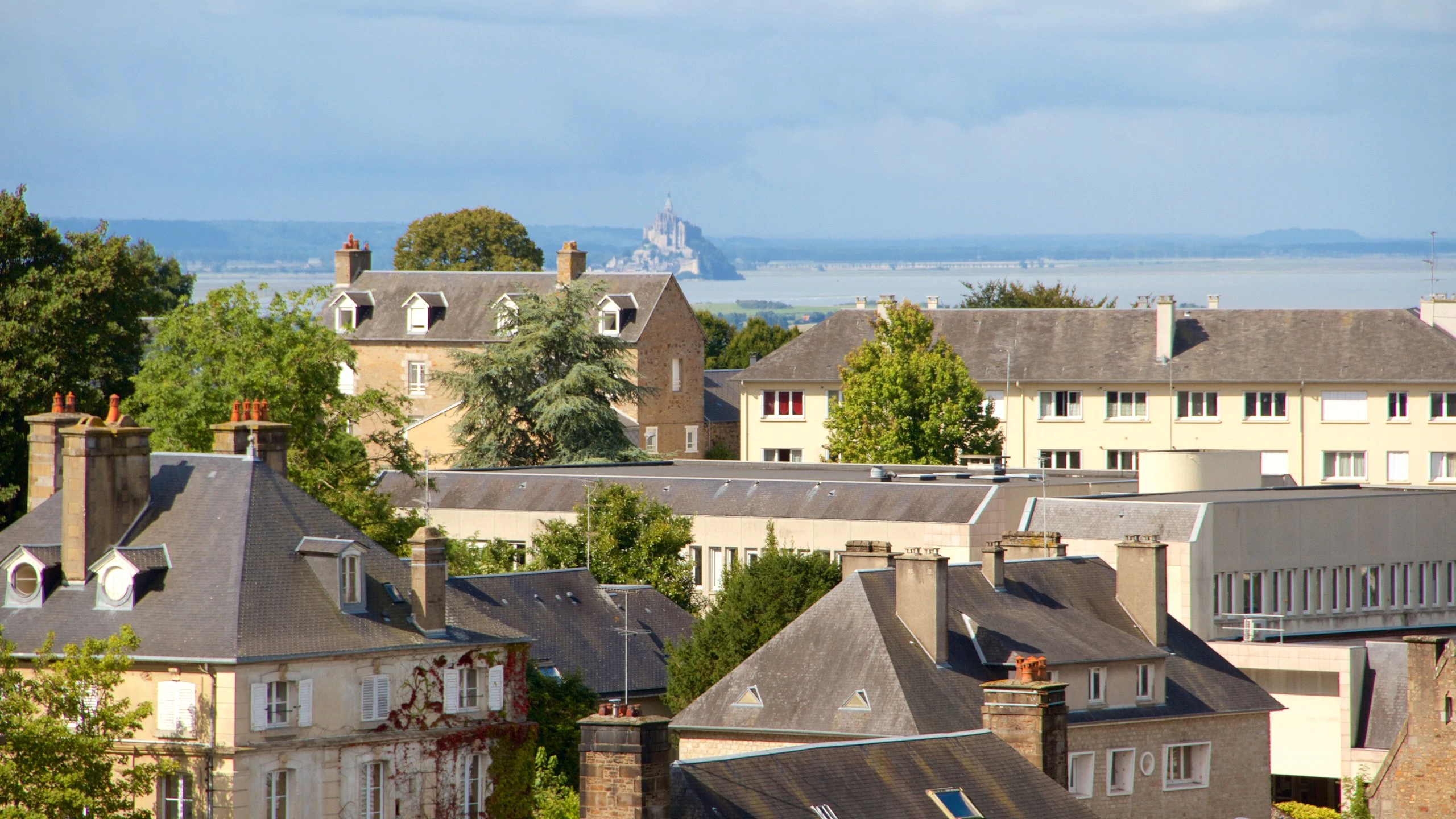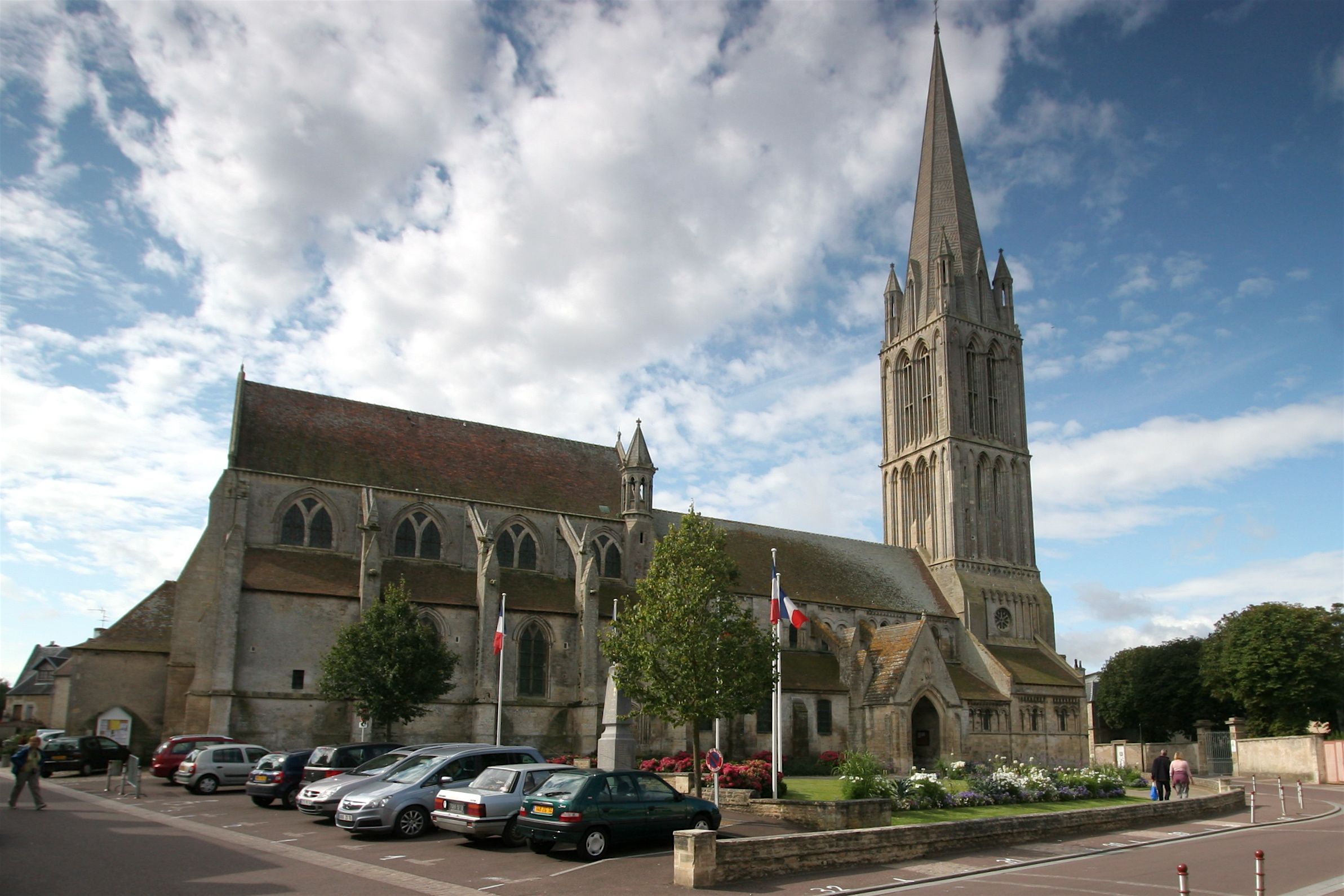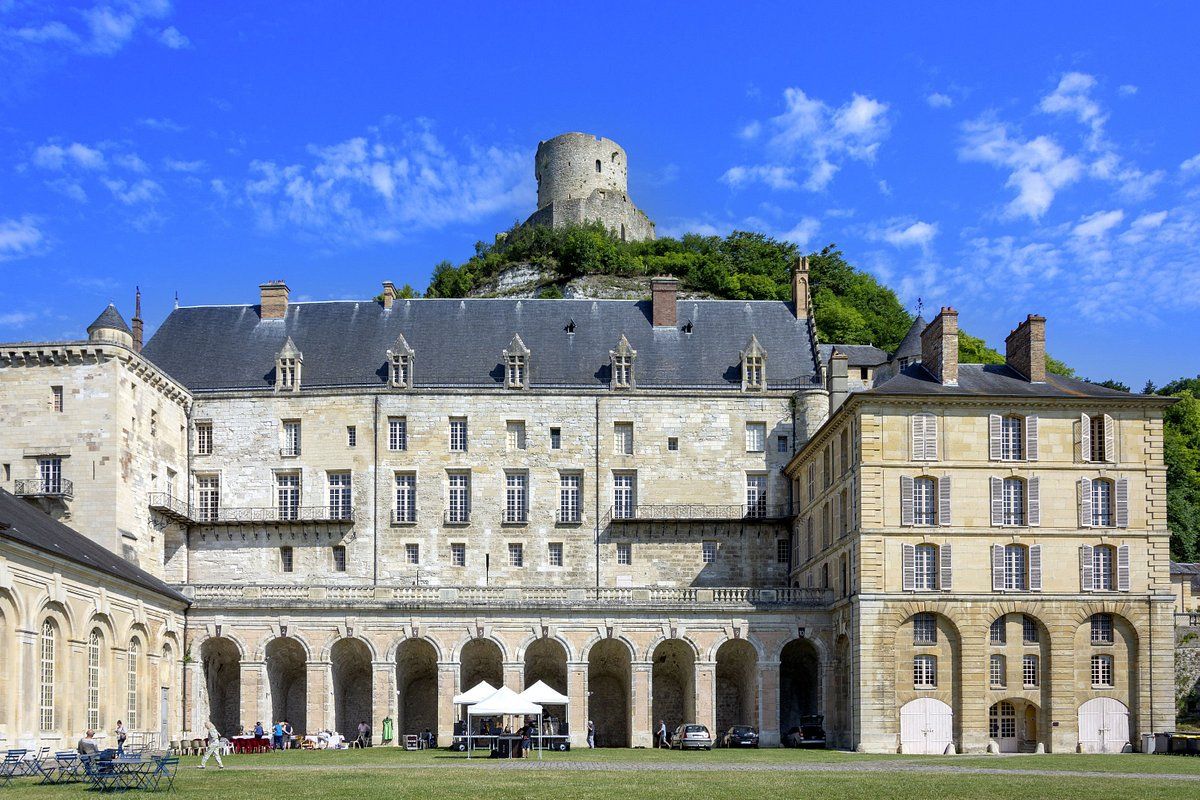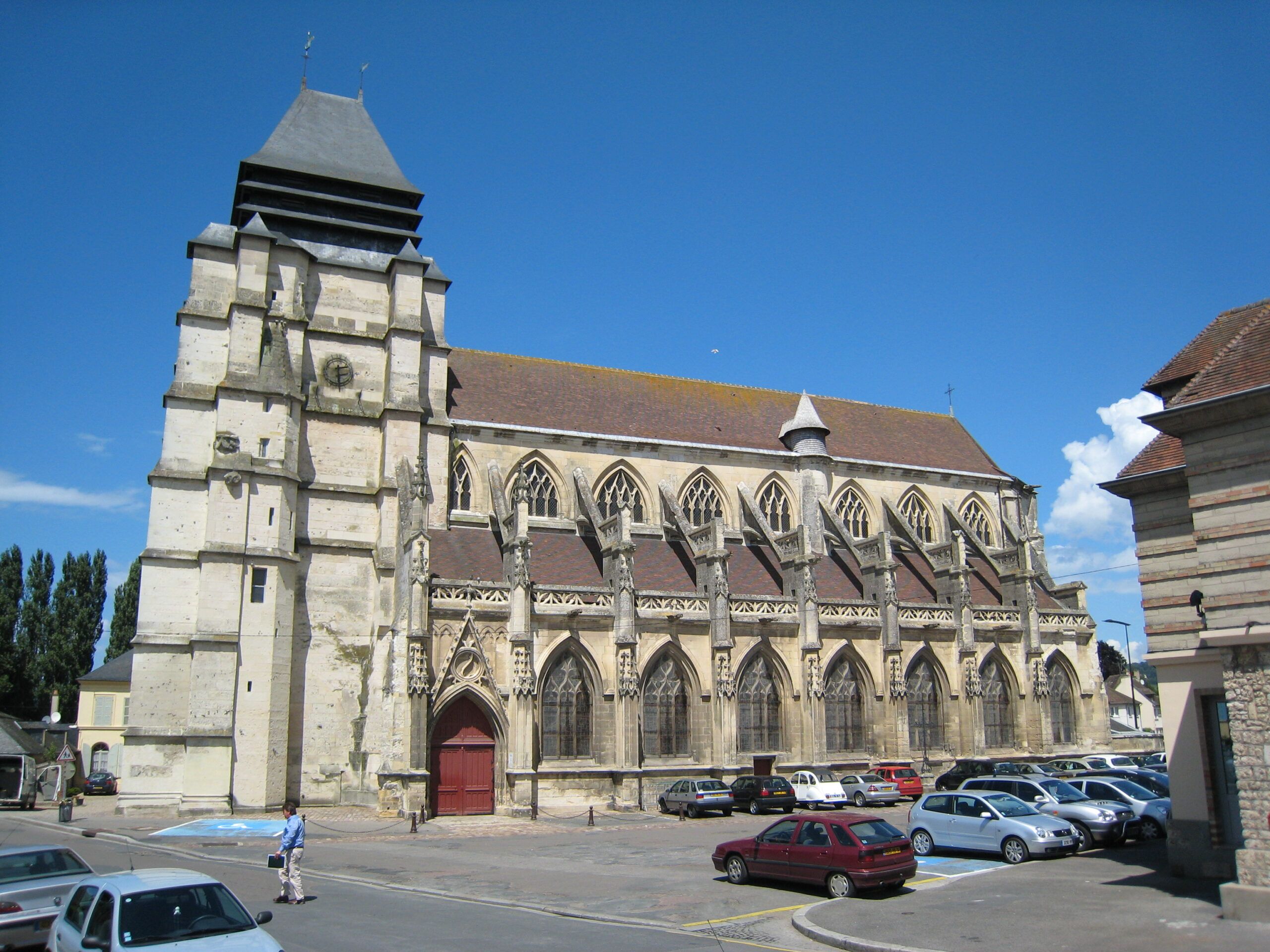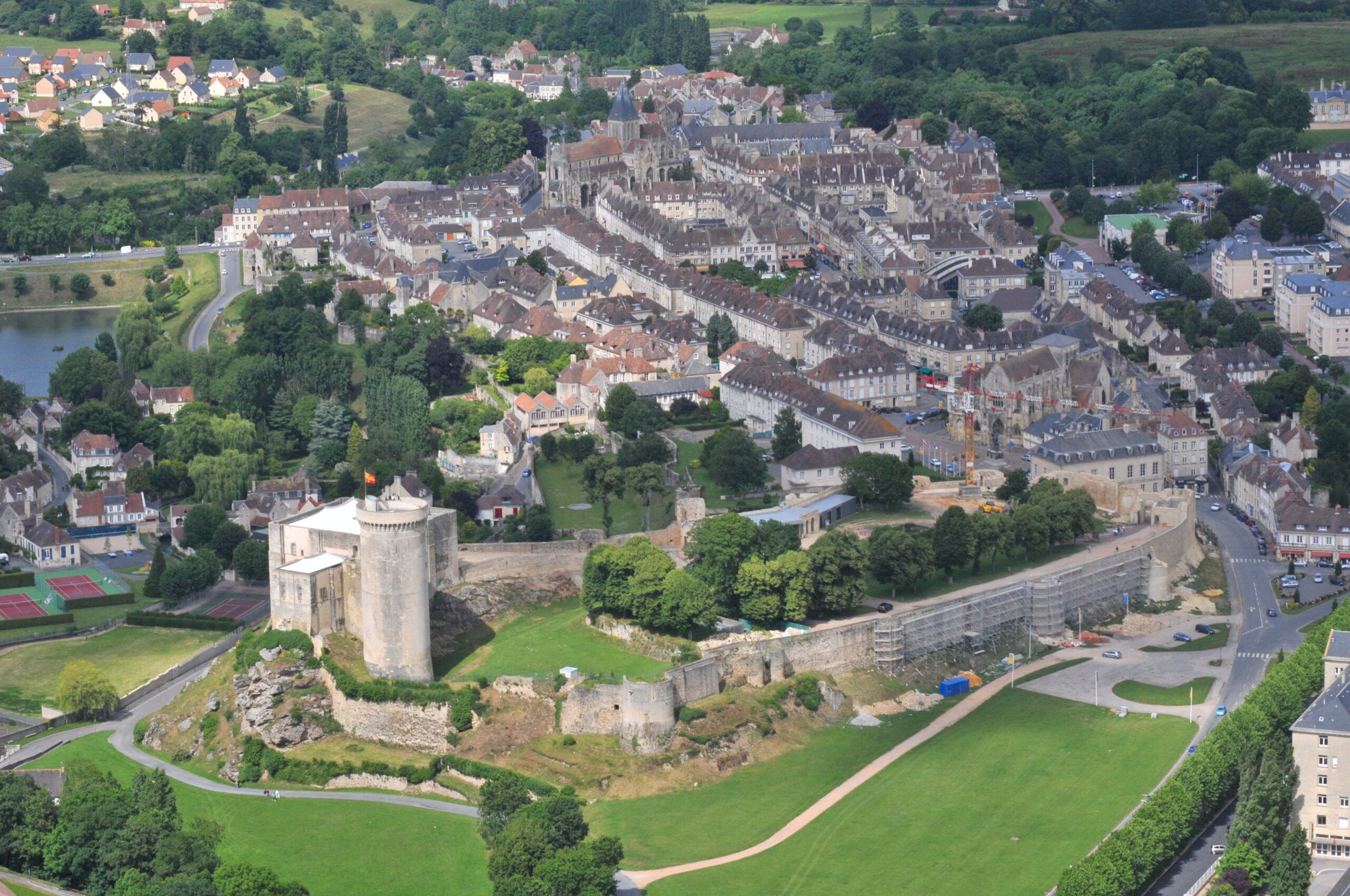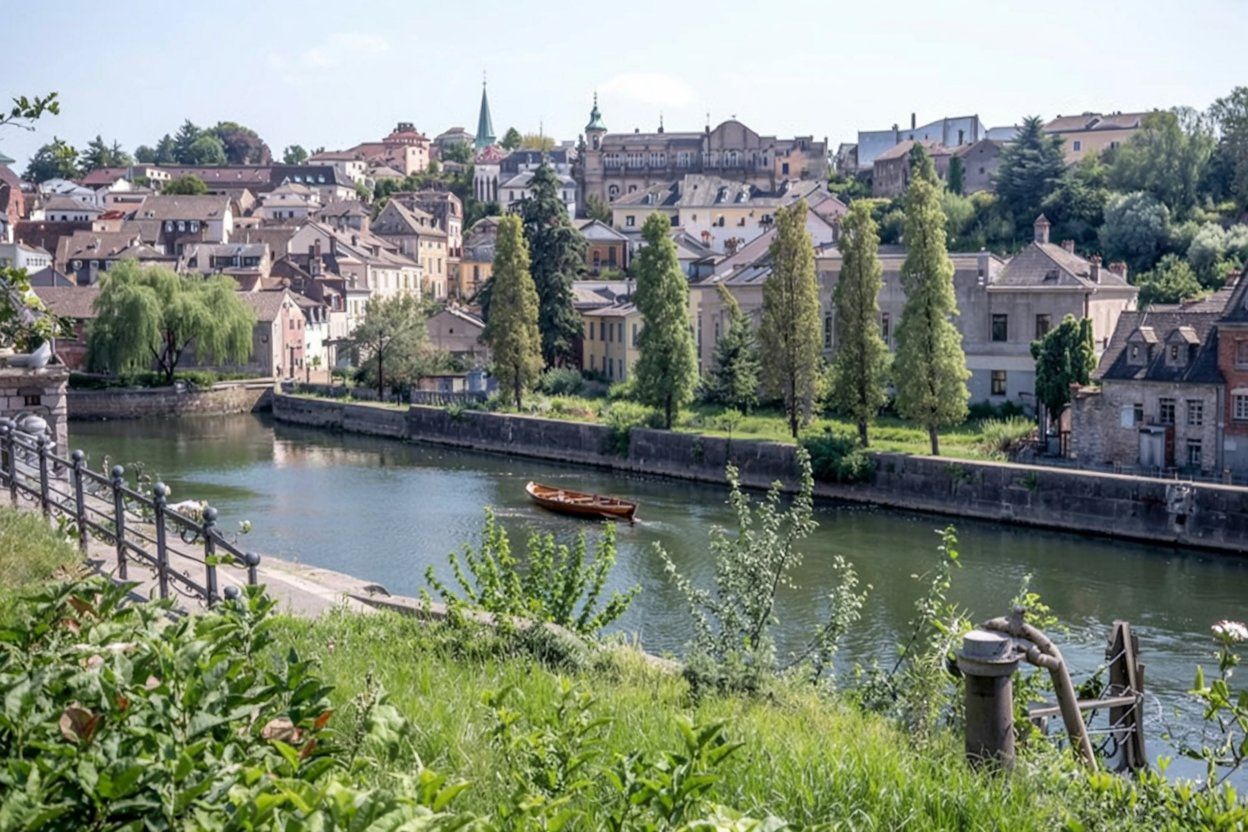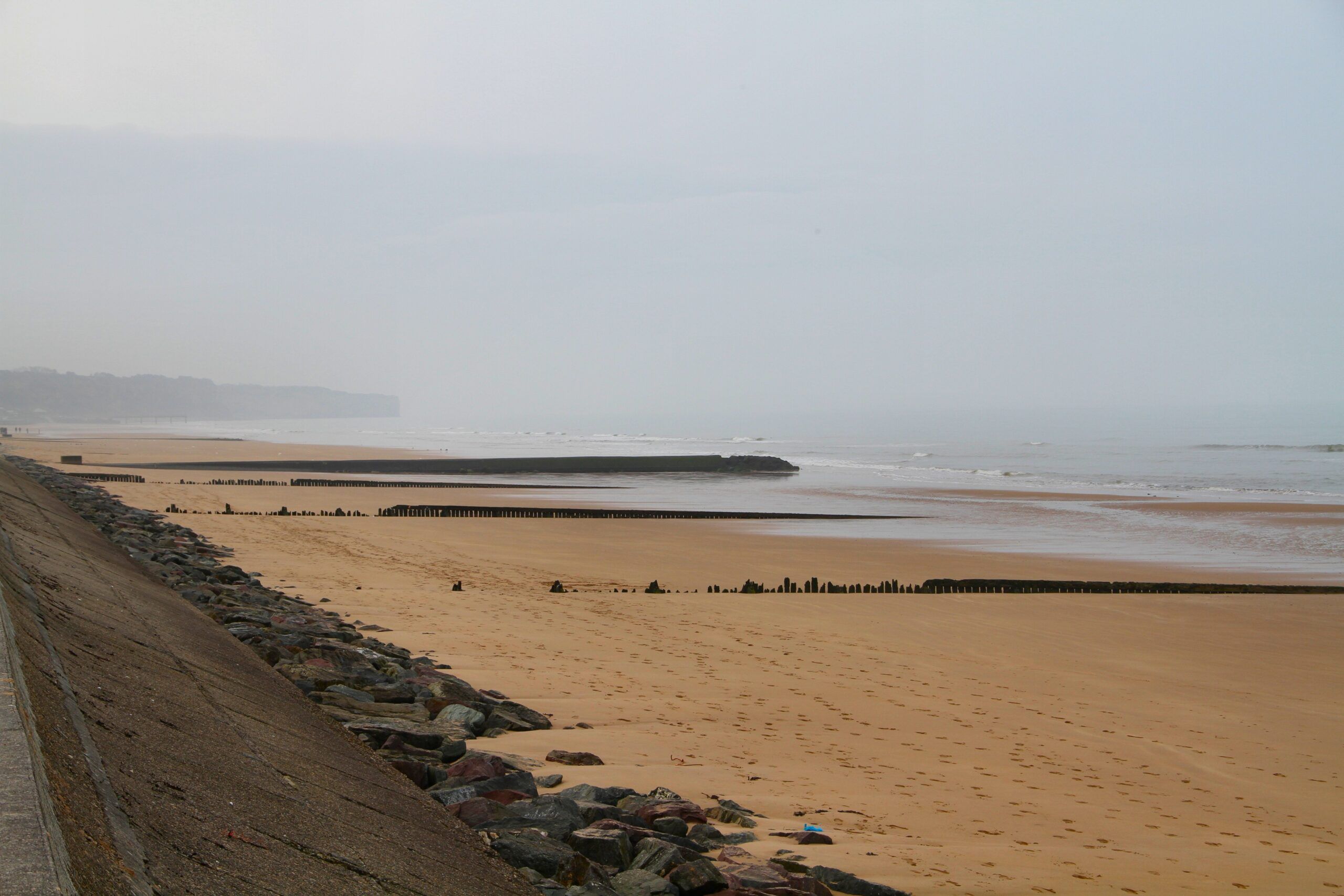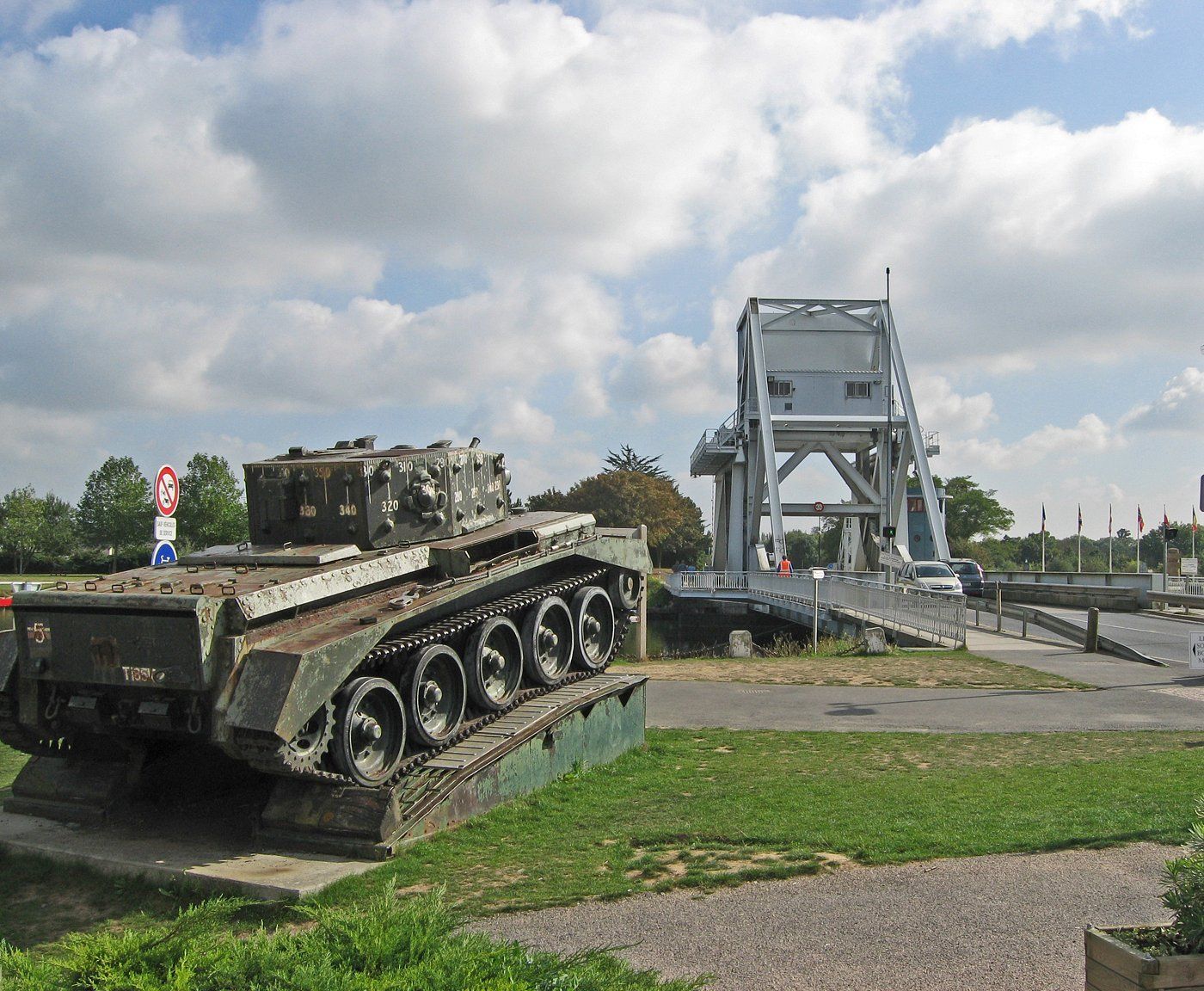Cherbourg sits on the Normandy coast, a city shaped by its past and bustling with life today. Its deep-water port became a major target right after the D-Day landings on June 6, 1944. Cherbourg’s harbor was so important that the Allies made it a top priority, but German troops left it in ruins, following Hitler’s orders to destroy everything useful before retreating.
Now, Cherbourg welcomes visitors instead of warships. WWII history is everywhere, but so are lively waterfronts, museums, and those classic coastal views. Strolling along the harbor, it’s honestly hard to picture the devastation that once scarred this city.
Visit Recommended D-Day historic hotels and B&Bs along the invasion beaches.
Cherbourg’s Role During World War II
During WWII, Cherbourg became a focal point because of its deep-water port. The Germans dug in, knowing how much the Allies wanted it, and the Allies understood that capturing Cherbourg was key to keeping their armies supplied after D-Day.
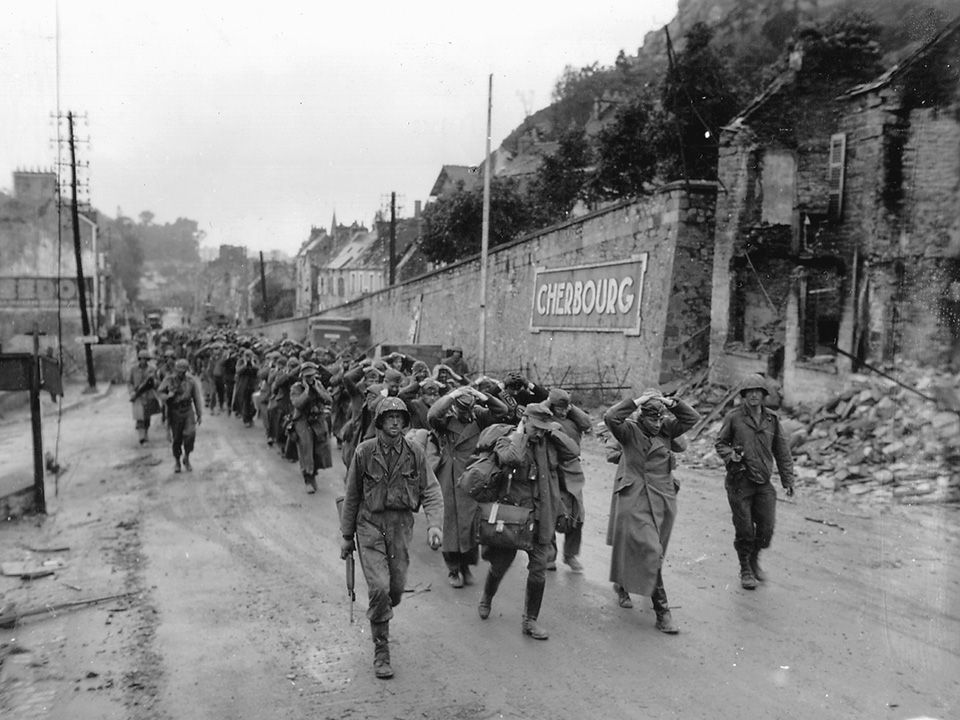
(Photo Courtesy of The National WWII Museum)
Strategic Importance of Cherbourg
Cherbourg’s harbor, tucked into the Cotentin Peninsula, was a prize. Unlike the temporary Mulberry harbors the Allies built on the beaches, Cherbourg offered a real, working port. It could take in massive supply ships—no small thing for an advancing army.
Without Cherbourg, getting enough food, fuel, and ammunition inland would have been a nightmare. Military planners made it a central goal in Operation Overlord, and American troops were tasked with taking it as soon as possible.
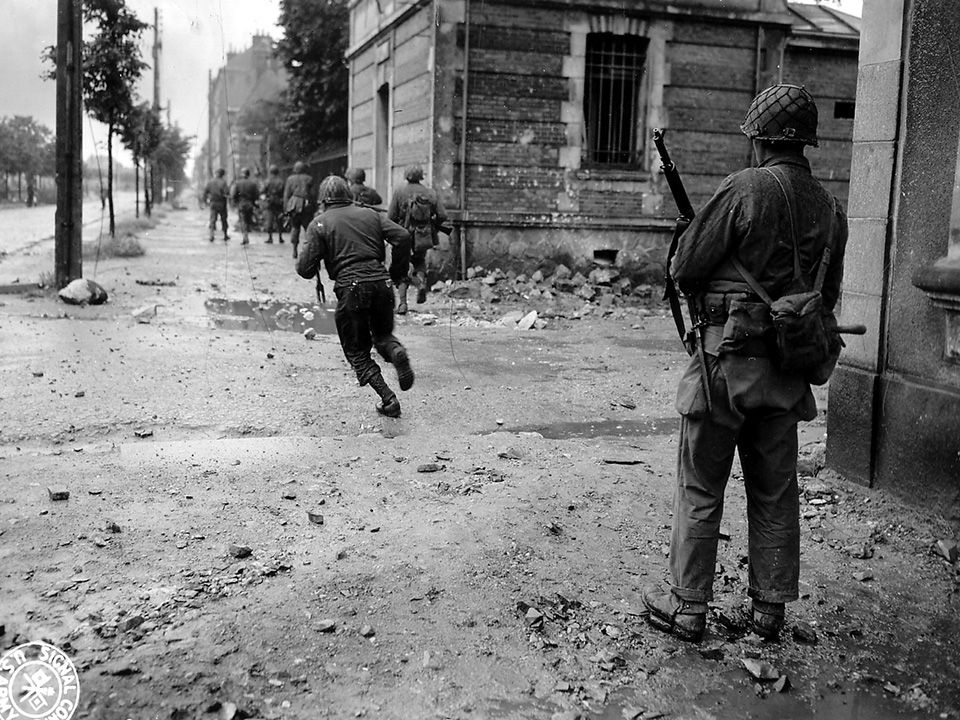
(Photo Courtesy of The National WWII Museum)
Fully operational, the port could move about 10,000 tons of supplies a day. That’s why it was circled in red on so many Allied maps.
German Forces and the Atlantic Wall
The Germans didn’t leave Cherbourg to chance. As part of the Atlantic Wall defenses, they built bunkers, set up heavy coastal guns, and layered the place with mines and anti-tank ditches.
Some 40,000 German troops defended the Cotentin Peninsula, many of them clustered around Cherbourg. There were Wehrmacht units and plenty of naval forces too.
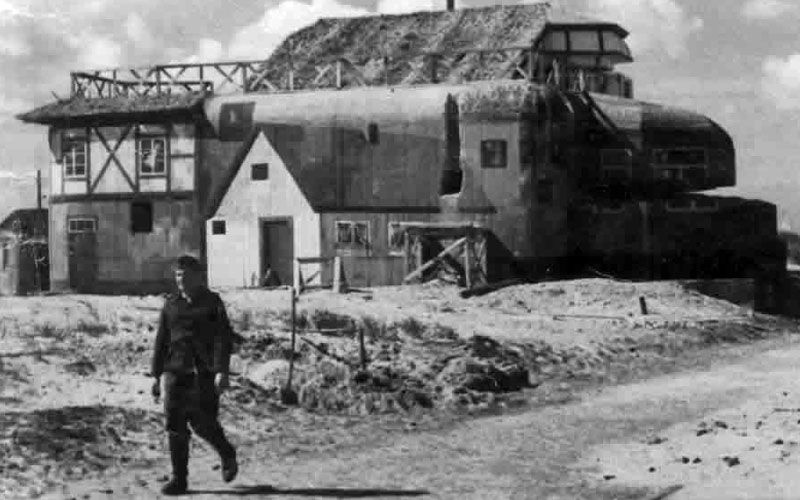
The defenses included:
- Artillery batteries with big guns (up to 210mm)
- Anti-aircraft emplacements
- Concrete bunkers and casemates
- Thick minefields
- Anti-tank ditches
Hitler called Cherbourg a “fortress”—meaning the garrison was expected to fight to the bitter end, no matter what.
The Occupation and Local Resistance
German troops occupied Cherbourg for four long years starting in June 1940. Life for locals changed overnight—occupiers took over city government and imposed strict rules.
The French Resistance in Cherbourg was gutsy, gathering intel on German positions and passing it to the Allies. Their reports helped shape the battle plans for the liberation.
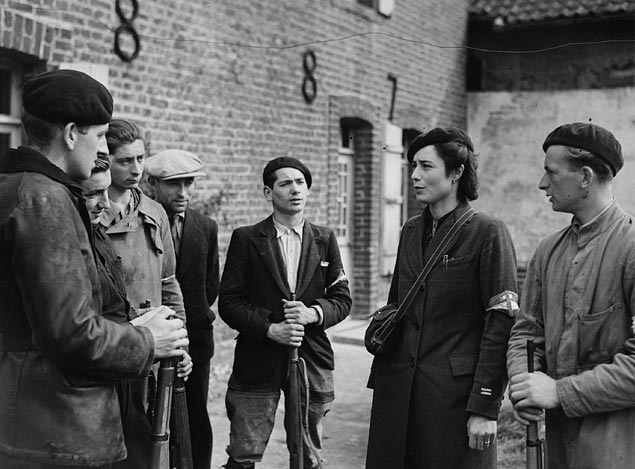
Some resistance members sabotaged German equipment or cut communication lines, knowing full well what could happen if they were caught. Their actions chipped away at German control and kept hope alive among civilians.
As the Americans closed in, the Germans set about wrecking the port. They blew up cranes, scuttled ships, and rigged booby traps everywhere, determined to keep the Allies from using the harbor.
D-Day and Operation Overlord
Operation Overlord kicked off on June 6, 1944. It was the Allied push to liberate Western Europe from Nazi occupation—a turning point for WWII.
Planning the Normandy Invasion
Allied leaders spent months plotting Overlord. Normandy, not the closer Pas-de-Calais, got the nod because its beaches were suitable and defenses were lighter.
To throw off the Germans, the Allies cooked up Operation Bodyguard, a deception campaign with fake equipment, double agents, and misleading radio chatter.
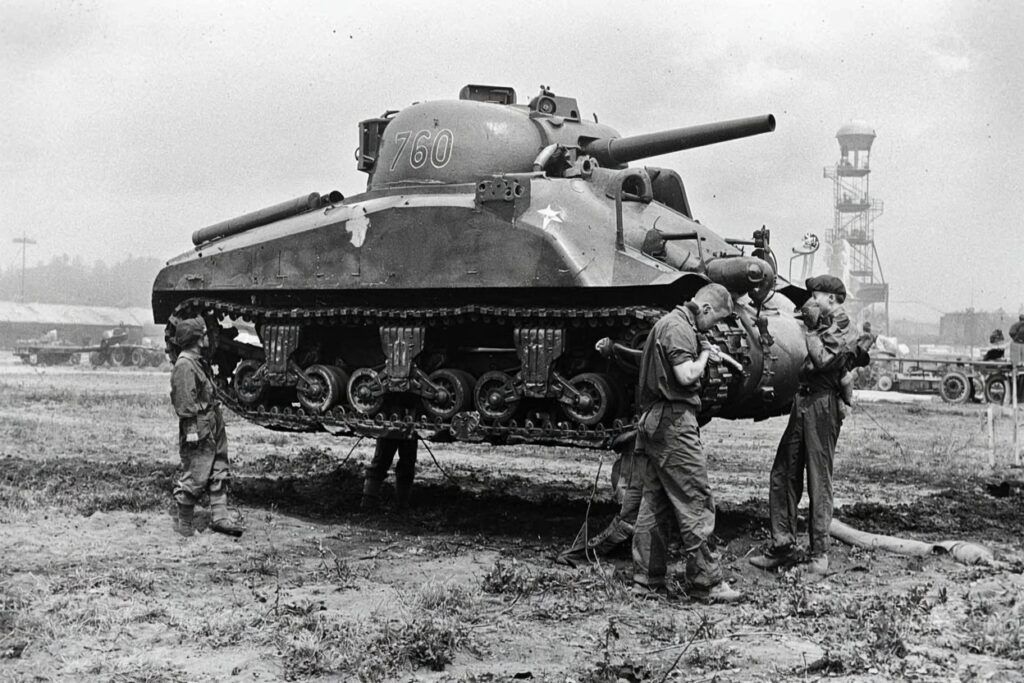
Weather became a big deal—timing had to be just right:
- Full moon for airborne drops at night
- Low tide at dawn so engineers could see and clear obstacles
- Calm seas for the fragile landing craft
General Eisenhower made the call to go on June 6, even though the weather was dicey. The Germans didn’t expect an attack in such conditions, and that worked in the Allies’ favor.
Key Allied Forces Involved
The invasion force was a mix of American, British, Canadian, and other Allied troops—an enormous, coordinated effort.
Main Allied Forces:
- Americans landed at Utah and Omaha beaches
- British forces hit Gold and Sword beaches
- Canadians took on Juno beach
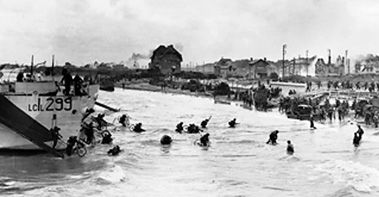
Before dawn, American and British airborne divisions parachuted in behind enemy lines. Their job: grab bridges and crossroads, and slow down German reinforcements.
Allied air forces bombed coastal defenses and roads, while keeping German planes away from the beaches. The naval armada—over 5,000 ships from eight navies—ferried men and gear across the Channel.
Naval Bombardment and Amphibious Landing
The attack started with a thunderous naval bombardment. Battleships, cruisers, and destroyers blasted German positions before troops hit the sand.
Landings began at 6:30 AM. Special “DD tanks” (amphibious tanks) rumbled ashore to help the first waves of infantry.
Each beach told a different story:
- Utah Beach: Lighter casualties
- Omaha Beach: Heavy American losses, brutal resistance
- Gold, Juno, Sword: Mixed results, moderate casualties
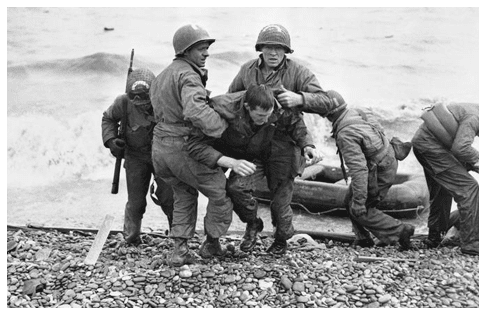
Combat engineers braved gunfire to clear mines and obstacles—wooden stakes, metal tripods, and hidden explosives everywhere.
By nightfall, the Allies had a foothold in Normandy. Cherbourg, with its vital port, quickly became the next big goal for Allied troops.
Cherbourg’s Capture After D-Day
After the D-Day landings, Allied commanders zeroed in on Cherbourg. They needed its port to keep armies fueled and moving as the push into France gathered pace.
Timeline: June 1944 Events
June 6: Operation Overlord begins. By June 10, U.S. troops have secured key coastal spots and start heading for Cherbourg.
June 14: The 9th and 79th Infantry Divisions begin advancing up the peninsula.
June 18: Allies cut off the Cotentin Peninsula, trapping German troops in Cherbourg.
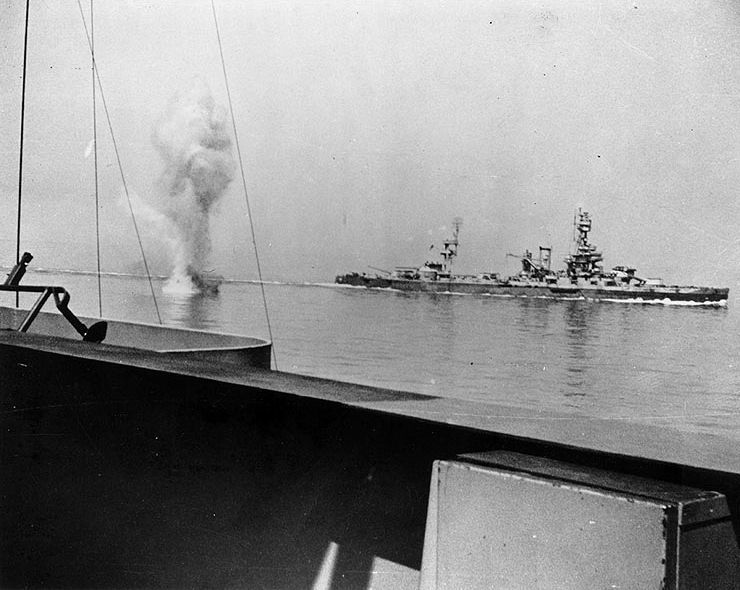
June 22: American forces reach the city’s outskirts and launch their assault.
June 26: Most German forces surrender, though some stubborn resistance lasts until June 30.
Battle for Cherbourg
The fight for Cherbourg was fierce and costly. Hitler’s “fortress” order meant German troops had dug in deep with bunkers, artillery, and minefields. They were told to fight to the last man, and many did just that.
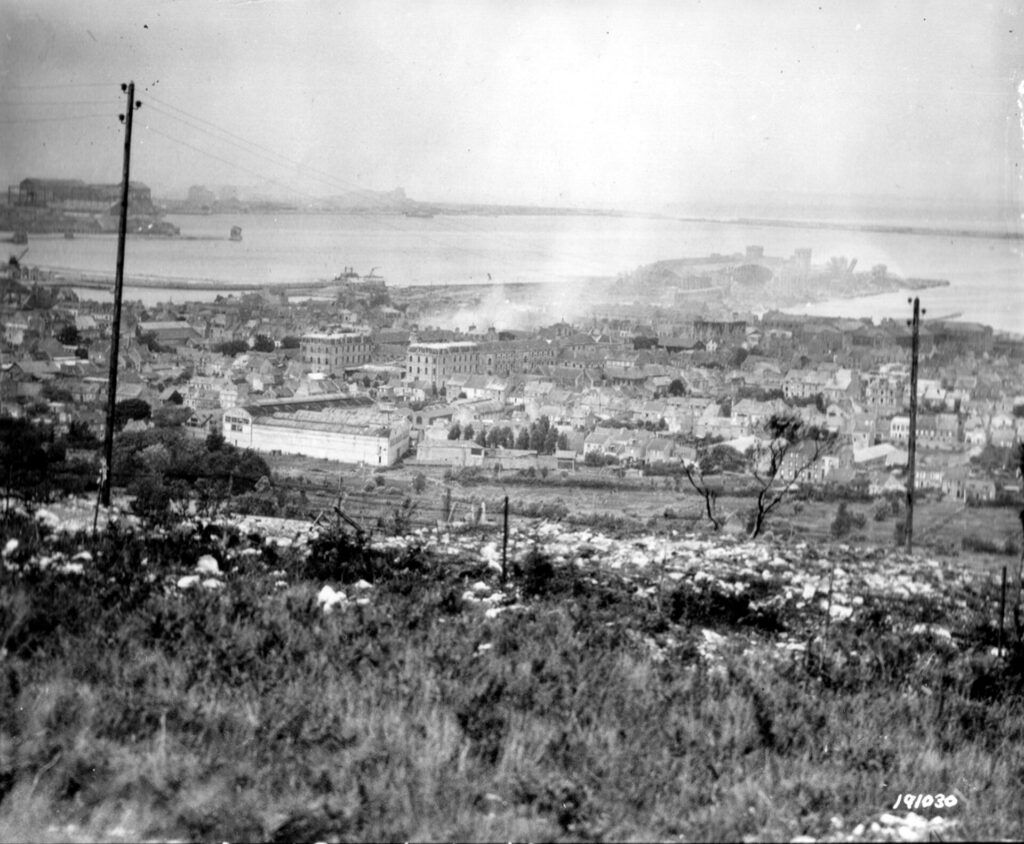
American troops pushed in from several directions, facing intense street fighting that left parts of the city in ruins.
As they fell back, German forces wrecked the port—blowing up docks, sinking ships, and leaving booby traps everywhere. The Allies couldn’t use the harbor right away; it took weeks to clear and repair.
Role of U.S. Army and Allied Troops
The U.S. VII Corps, led by General J. Lawton Collins, spearheaded the attack. The 4th, 9th, and 79th Infantry Divisions did most of the heavy lifting.
They used coordinated artillery, air strikes, flamethrowers, and combat engineers to break through German defenses. Naval gunfire from battleships and cruisers offshore also helped soften resistance.
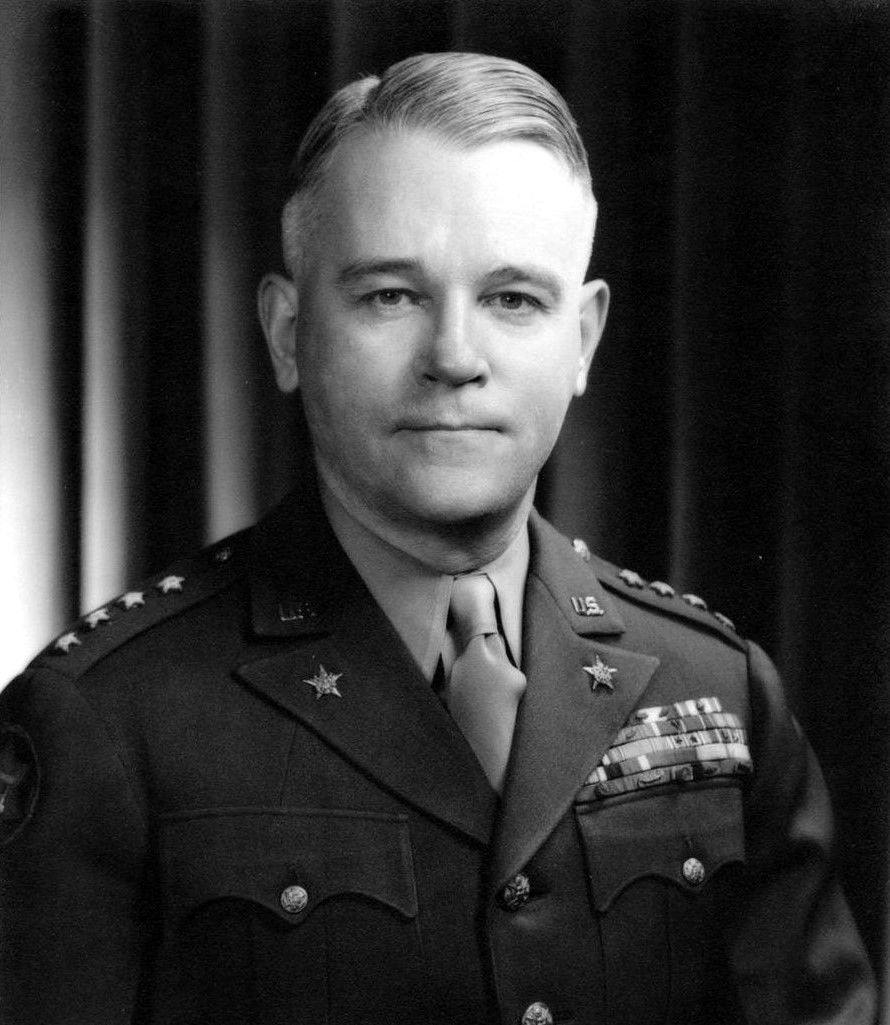
Clearing bunkers and buildings under fire took guts. Many soldiers earned medals for bravery in those days.
Despite the damage, capturing Cherbourg gave the Allies the supply line they desperately needed for the next phase of the campaign.
Beaches and Landing Sites Near Cherbourg
The Normandy coast near Cherbourg is dotted with the famous D-Day beaches—each with its own story from June 6, 1944. These were the front lines of one of history’s biggest military operations.
Utah Beach
Utah Beach is closest to Cherbourg, stretching about 5 kilometers along the Cotentin Peninsula. On D-Day, the U.S. 4th Infantry Division landed here and, compared to other beaches, got off relatively lightly.
Their objective was clear: secure the beach and drive toward Cherbourg’s port.
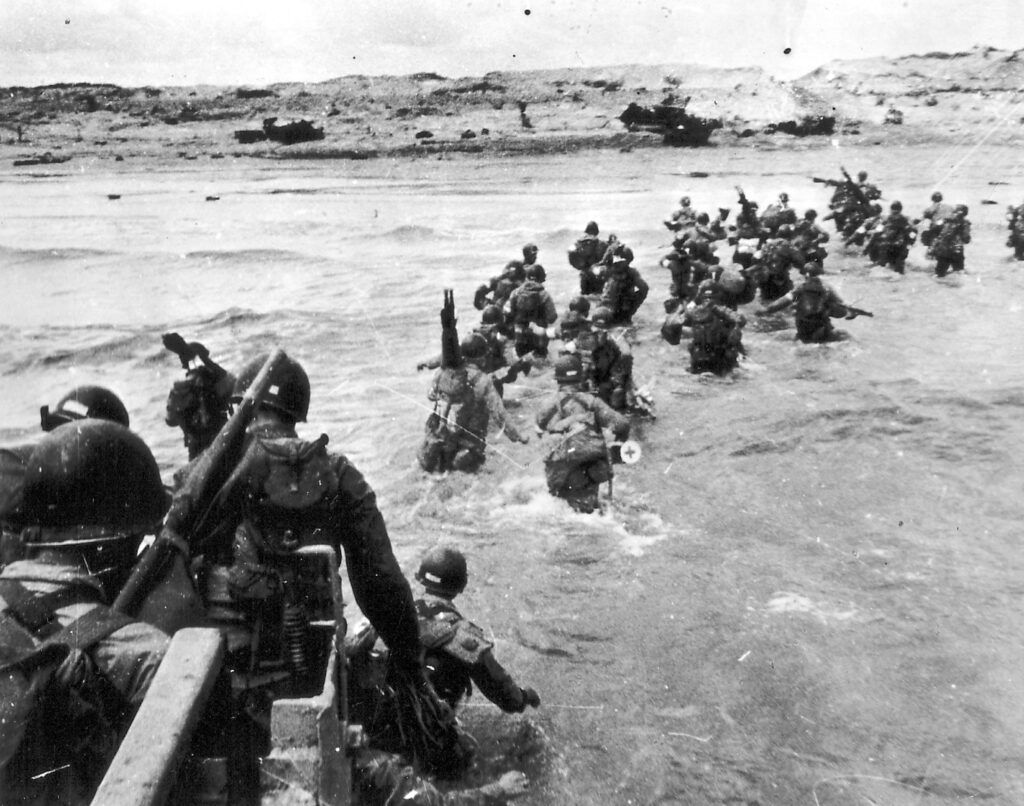
Today, the Utah Beach Museum sits right at the landing site. You’ll find an original B-26 bomber and a trove of artifacts from the battle.
Monuments and markers line the beach, including the striking “Les Braves” sculpture. The peaceful sands and calm water today feel a world away from the chaos of 1944.
Omaha Beach
Omaha Beach, about 50 kilometers east of Cherbourg, is infamous for the heavy losses suffered by American forces. The stretch runs about 8 kilometers, between Vierville-sur-Mer and Colleville-sur-Mer.
High bluffs gave German defenders the upper hand, making the landing deadly. The U.S. 1st and 29th Divisions eventually took the beach, but at a huge cost.
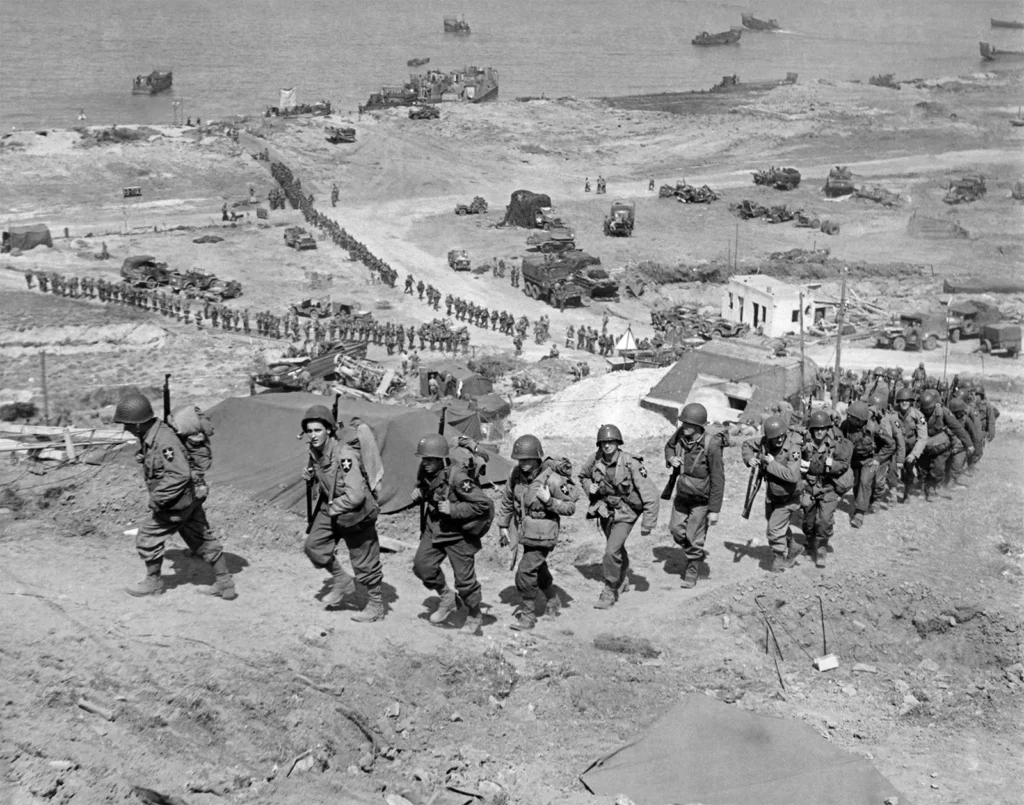
The Normandy American Cemetery overlooks Omaha Beach, with 9,388 American graves and a visitor center that puts the battle in context.
Walking the beach, you can’t help but feel the weight of history. The terrain itself shows why so many struggled to survive here.
Low Tide and High Tide Significance
Tides played a huge role on D-Day. The Allies landed at low tide so engineers could spot and clear German obstacles, but that meant soldiers had to cross up to 300 meters of open sand under fire at Utah and Omaha.
High tide would have shortened their run, but hidden the deadly obstacles. The invasion was timed for a specific tidal window—moonlight for the paratroopers and low tide for the beach landings.
If you visit today, the difference between high and low tide is dramatic. The beaches look completely different, depending on when you go.
Airborne Operations and the Cotentin Peninsula
The airborne drops over the Cotentin Peninsula were crucial for the D-Day plan. American paratroopers jumped behind enemy lines, aiming to grab key roads and bridges, cause confusion, and help the beach landings succeed.
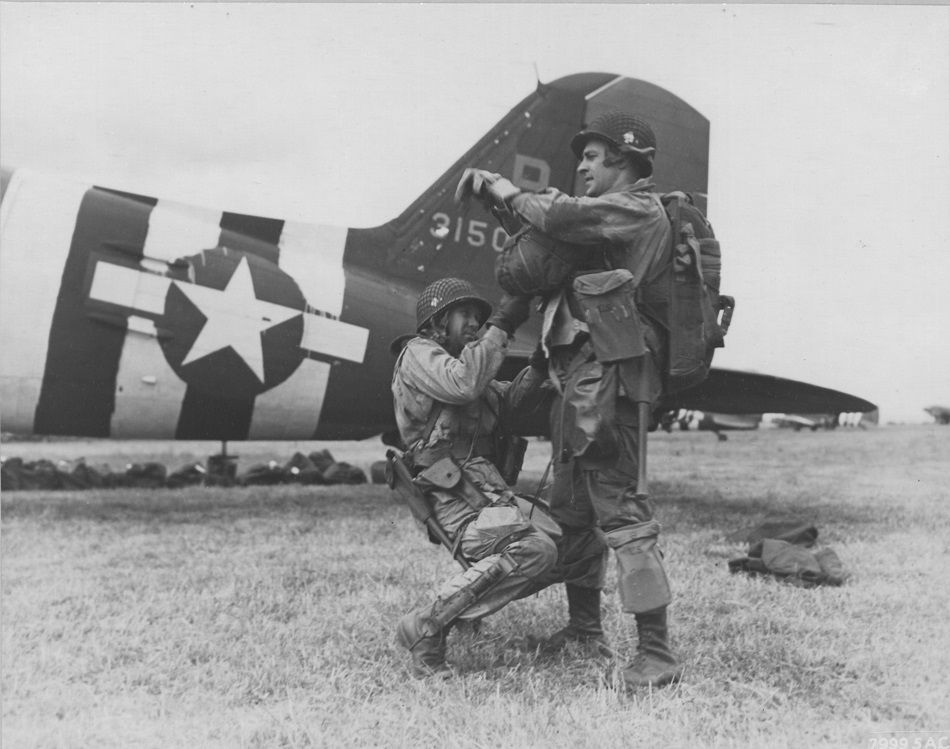
Role of Paratroopers
The U.S. 82nd and 101st Airborne Divisions got the job of securing the western flank at Utah Beach. Their orders? Capture causeways over the flooded fields and seize important crossroads and towns.
They jumped into darkness early on June 6, 1944. Many landed in the wrong spots due to bad weather and anti-aircraft fire, but that scattered chaos actually worked against the Germans, making it harder for them to organize a defense.
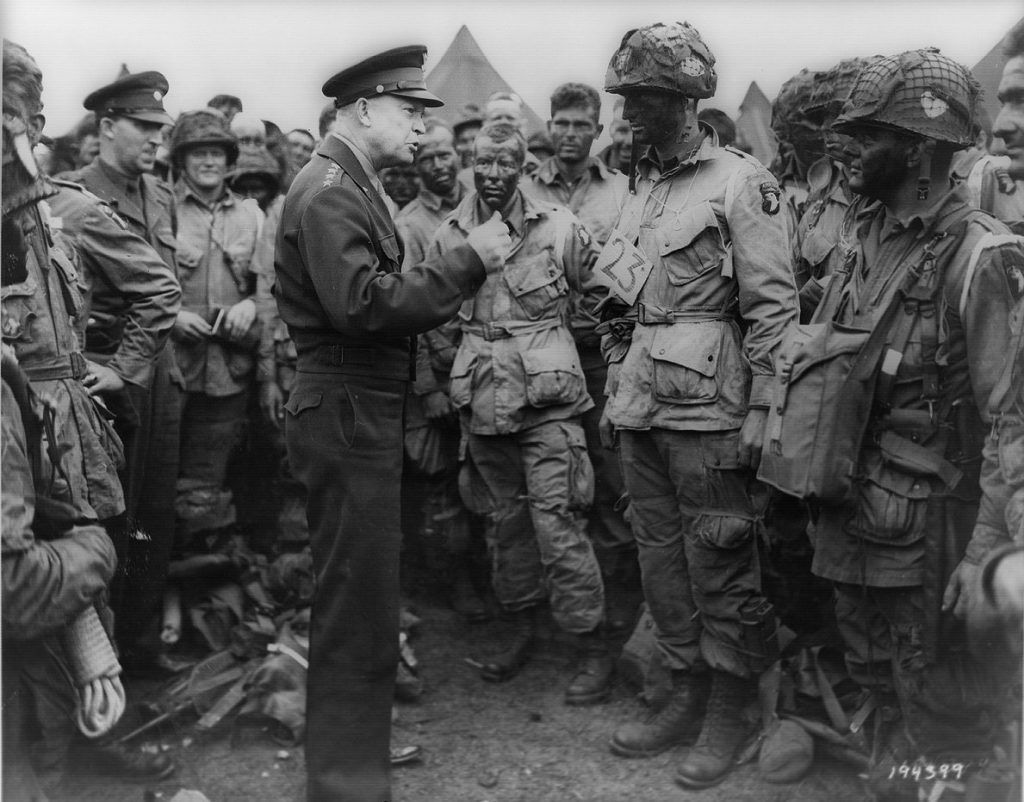
Key objectives: grab the Merderet River bridges and the town of Sainte-Mère-Église. The 101st focused on opening exits from Utah Beach, while the 82nd blocked German counterattacks.
Airborne Forces and Tactical Achievements
Despite the confusion, the airborne troops pulled off some impressive feats. They cut German communications and stopped counterattacks that could have pinned Allied troops on the beaches.
The 101st Airborne secured four causeways, letting the 4th Infantry Division move off Utah Beach and inland. This probably saved a lot of lives.
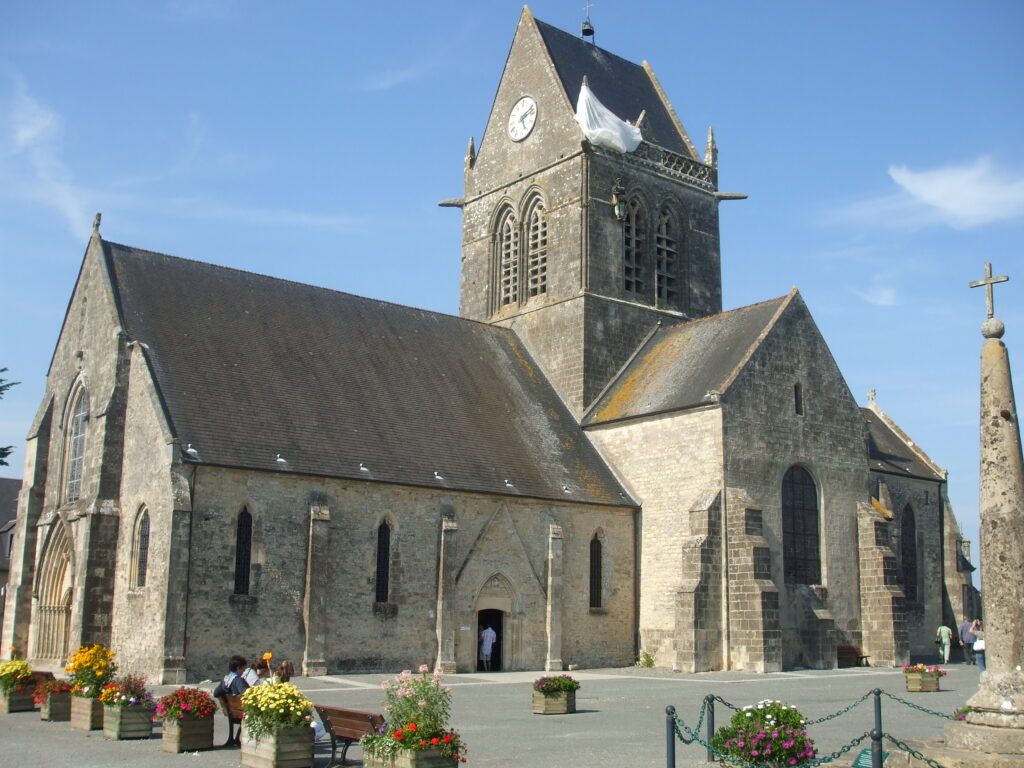
Sainte-Mère-Église was the first French town liberated on D-Day. The Airborne Museum there is worth a visit, and the church where John Steele got stuck on the steeple is still there—a quirky, moving reminder of the operation.
These airborne missions paved the way for the Allies to capture Cherbourg and its crucial port.
Supply Lines and Logistical Importance
Securing Cherbourg was absolutely vital after D-Day. The Allies couldn’t keep their armies moving with makeshift beach harbors alone.
The Port of Cherbourg and Supplies
Cherbourg’s deep-water port was a cornerstone of Allied plans. They needed a real harbor to bring in mountains of food, ammo, vehicles, and fuel. The temporary Mulberry harbors on the beaches just couldn’t keep up.
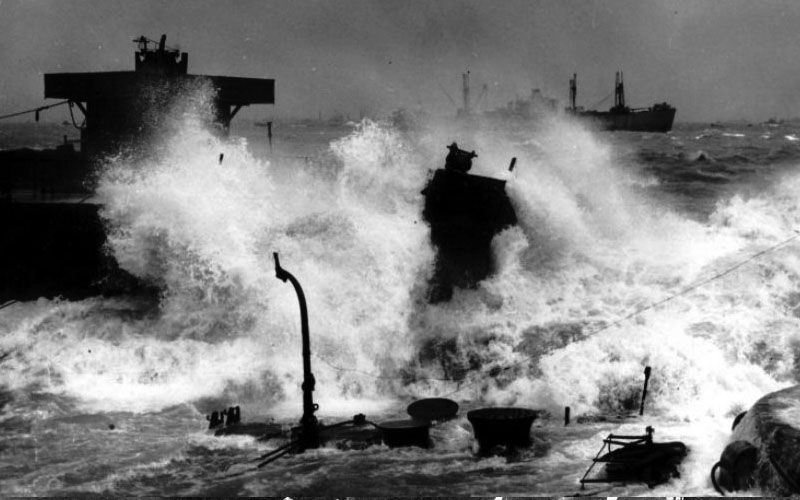
When storms wrecked Mulberry A (the American artificial harbor) soon after D-Day, grabbing Cherbourg became even more urgent. Only a port like Cherbourg could handle the big cargo ships needed to resupply the front lines.
Planners figured each soldier chewed through about 40 pounds of supplies a day. Multiply that by over a million troops, and you see why logistics was such a headache.
Post-Liberation Repairs and Use
When American troops marched into Cherbourg on June 27, 1944, they found the port a wreck—ships sunk, cranes blown up, explosives everywhere.
U.S. Army engineers worked around the clock, clearing the harbor and patching up what they could. Incredibly, they got the port partially running again by July 16, just three weeks after the city fell.
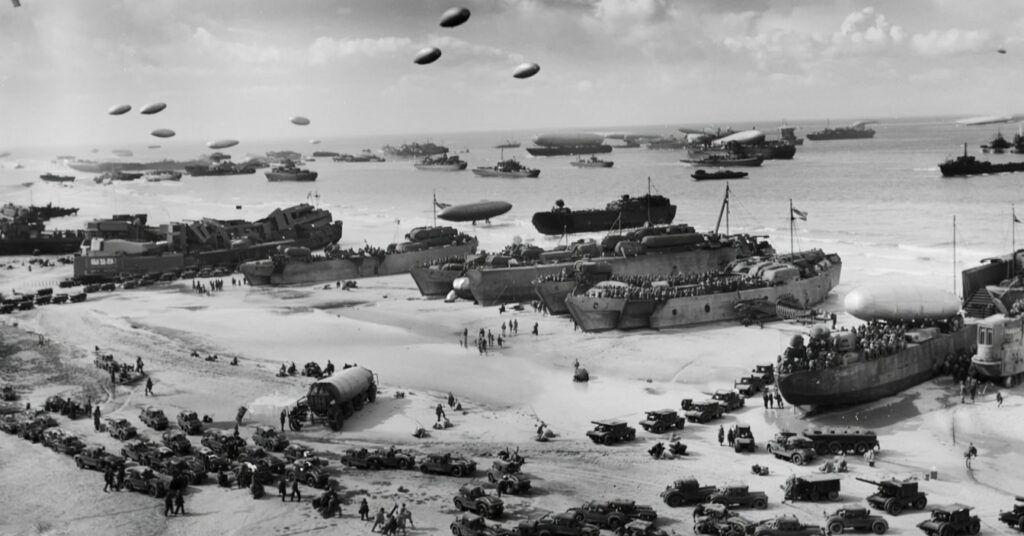
By August, Cherbourg was moving over 20,000 tons of supplies a day. It became the main supply hub for the American push across France.
Walking the port today, you’ll still spot some of those hulking concrete bunkers and get a sense of how high the stakes were for both sides.
Cherbourg in the Present Day
Modern Cherbourg is a mix of old and new—a city that remembers its history but isn’t stuck in the past.
Stay steps from Omaha Beach and historic landmarks. Best rates on local accommodations.
Modern Cherbourg and Cultural Highlights
The port remains central to Cherbourg’s identity. Cruise ships dock here, and the waterfront buzzes with restaurants and shops. The old port area has a new energy these days.
The Cité de la Mer maritime museum is a real highlight. Set in the old transatlantic terminal, it dives into submarine history, deep-sea exploration, and even Cherbourg’s Titanic connection.
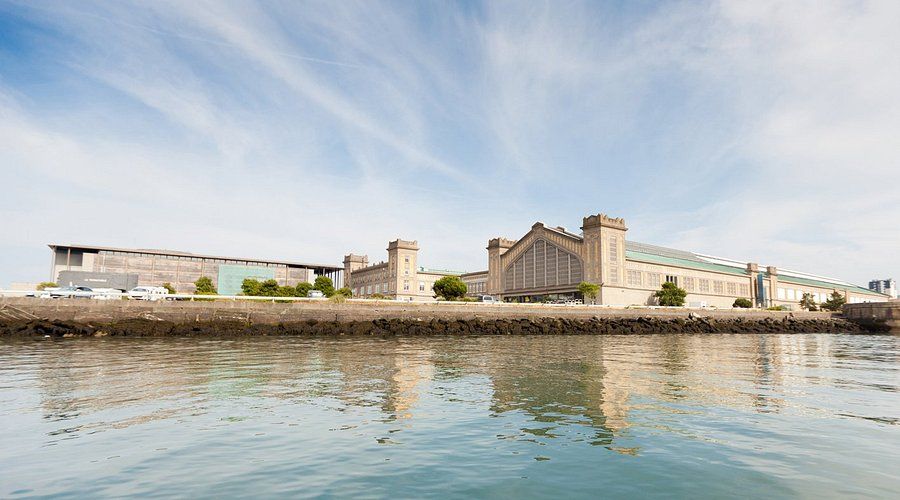
If you like seafood, you’re in luck. Local spots serve up fresh mussels and whatever the boats bring in that morning—definitely worth a try.
The city center is walkable, dotted with cafés, shops, and classic French architecture. The Théâtre à l’Italienne and Trinity Basilica are both worth a peek.
Annual Commemorative Events
Cherbourg marks its WWII history with several annual events. The Liberation Festival in June celebrates the city’s 1944 liberation with parades, reenactments, and memorials.
D-Day anniversaries in early June bring in visitors from around the world. While the biggest ceremonies happen at the beaches, Cherbourg hosts its own exhibitions and events about its wartime role.
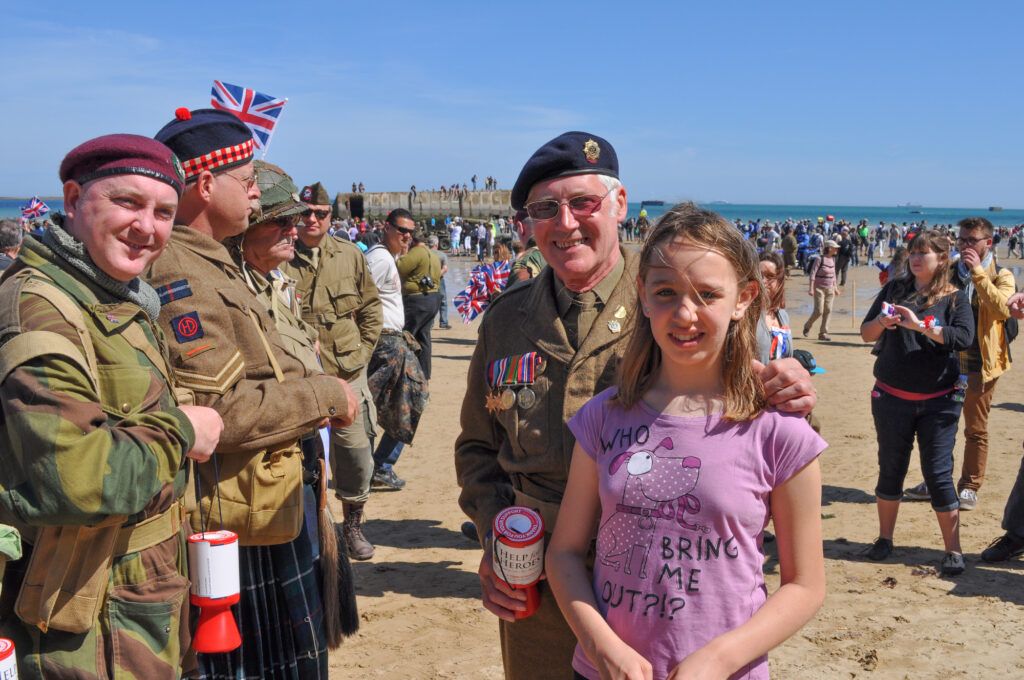
Veterans and military groups often stop by Cherbourg’s memorials. These visits are always moving reminders of what was at stake.
Local museums also run special displays, sharing artifacts and stories from Cherbourg’s wartime years—often with a personal touch from those who lived through it.
Check available accommodations in Cherbourg.
WW2 Memorials and Museums in Cherbourg
Cherbourg’s place in the D-Day story is hard to overstate. The city honors this legacy with museums and memorials that dig into both the German occupation and the Allied liberation.
Must-Visit Sites Honoring D-Day
The Liberation Museum (Musée de la Libération) is a must for any WWII buff. It’s up in Fort du Roule, with sweeping views over the city and exhibits that cover the occupation and liberation in detail.
Inside, you’ll find artifacts, weapons, uniforms, and photos from the era. Interactive displays show what daily life was like under German rule.
There are also special exhibits about Operation Neptune, the naval side of D-Day, and why Cherbourg’s harbor mattered so much to the Allies.
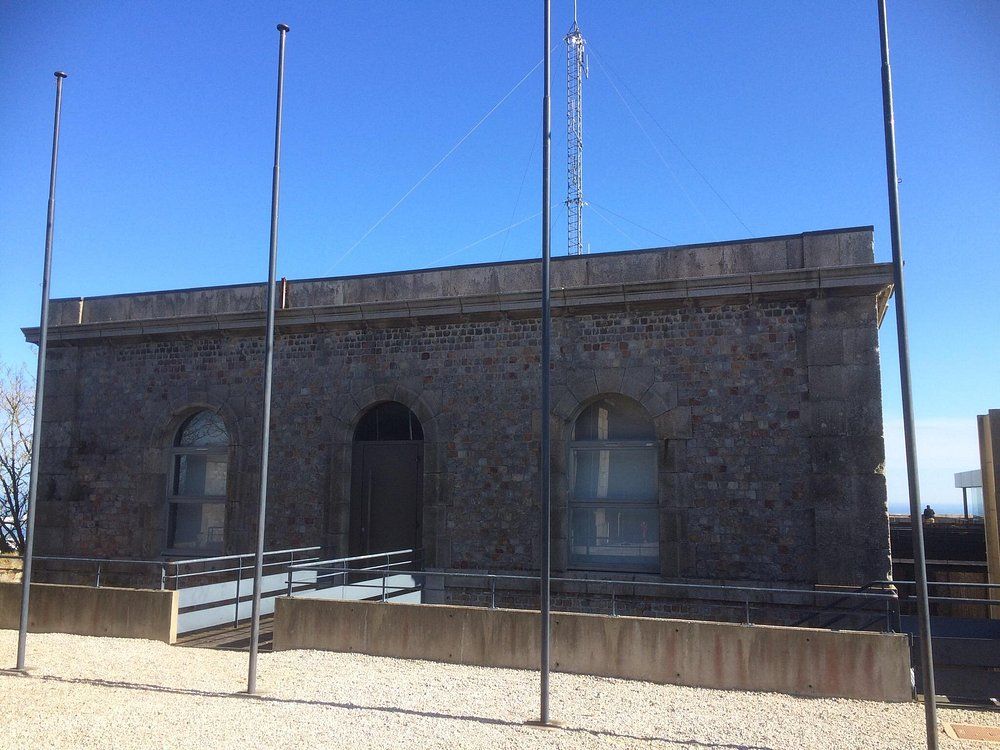
Visitor Information:
- Open Tuesday-Sunday, 10am-6pm (April-September)
- Shorter hours in winter
- Audio guides in English available
Historic Military Installations
Remnants of the Atlantic Wall still dot the area—concrete bunkers and gun emplacements that once guarded the coast. Some are open for visitors.
Fort du Roule itself was a German stronghold. Besides the museum, you can explore parts of the original fortifications.
The Naval Museum (Musée Maritime) has a section on WWII, showing how the Germans trashed the port and how Allied engineers managed to get it working again.
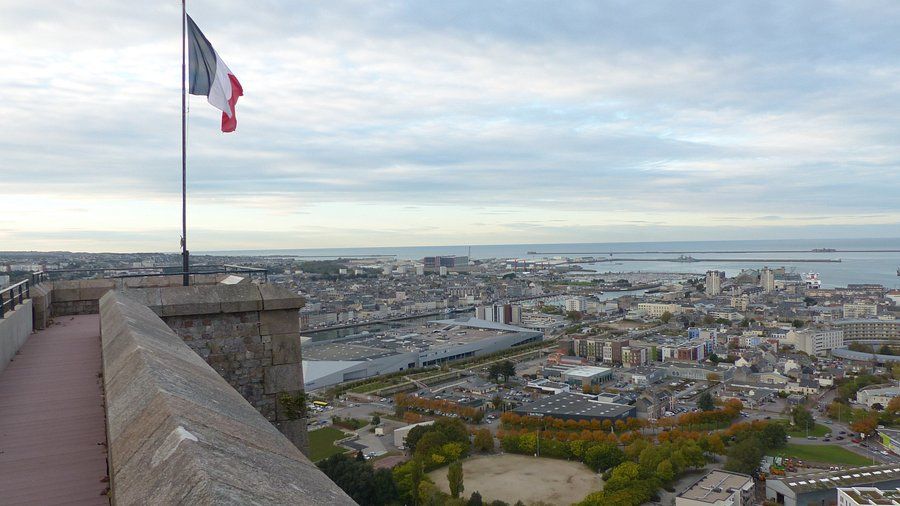
Underground Structures:
- German submarine pens
- Tunnels beneath the city
- Command bunkers from the occupation
Exploring these sites, you get a real sense of what Cherbourg went through and why it was so important in the aftermath of D-Day.
Find the perfect base for exploring Utah Beach, Pointe du Hoc, and beyond.
Planning Your Visit to Cherbourg
If you’re thinking about a trip to Cherbourg, a little planning goes a long way. Here’s what you’ll want to know for a smooth visit to this Normandy gem.
Best Time to Visit
May to September is the sweet spot—mild weather, plenty of daylight, and most sites open. Temps usually hover between 55°F and 70°F (13°C to 21°C).
June is special if you’re into history—the D-Day commemorations happen then, with ceremonies and events all over Normandy, Cherbourg included.
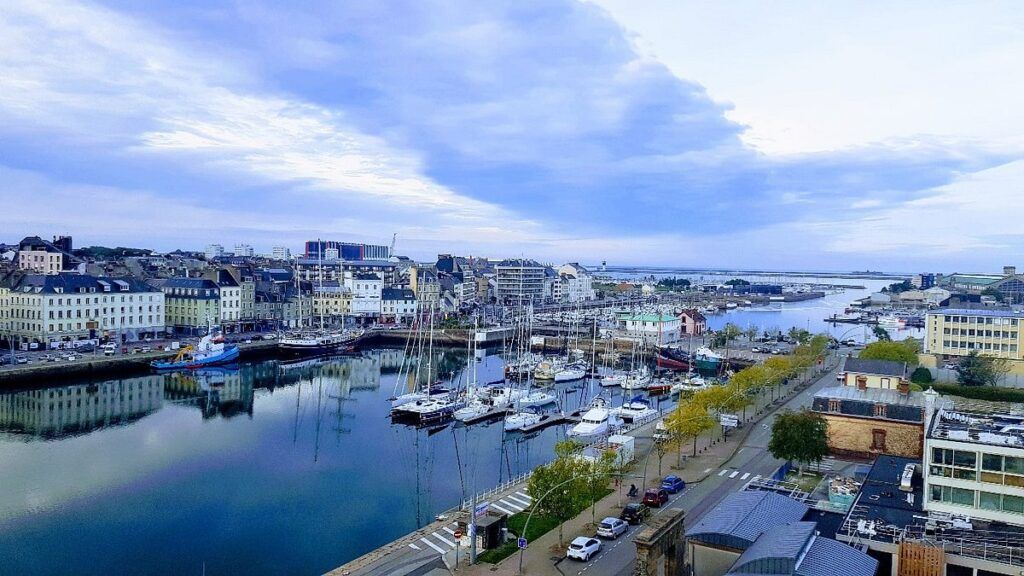
Winter (November-February) isn’t ideal. Many attractions cut hours or close, and Normandy’s rain is pretty relentless. Always pack a raincoat, just in case.
August gets busy with French vacationers. For fewer crowds, try mid-week in May or September.
Traveling to and Around Cherbourg
Cherbourg’s easy to reach. Ferries run from the UK (Portsmouth and Poole). Trains from Paris take about three hours, connecting via Caen.
Once you’re in town, you’ve got options:
- City buses (Zéphir network)
- Taxis
- Rental cars (handy if you want to see the beaches)
- Bikes for cruising the city center
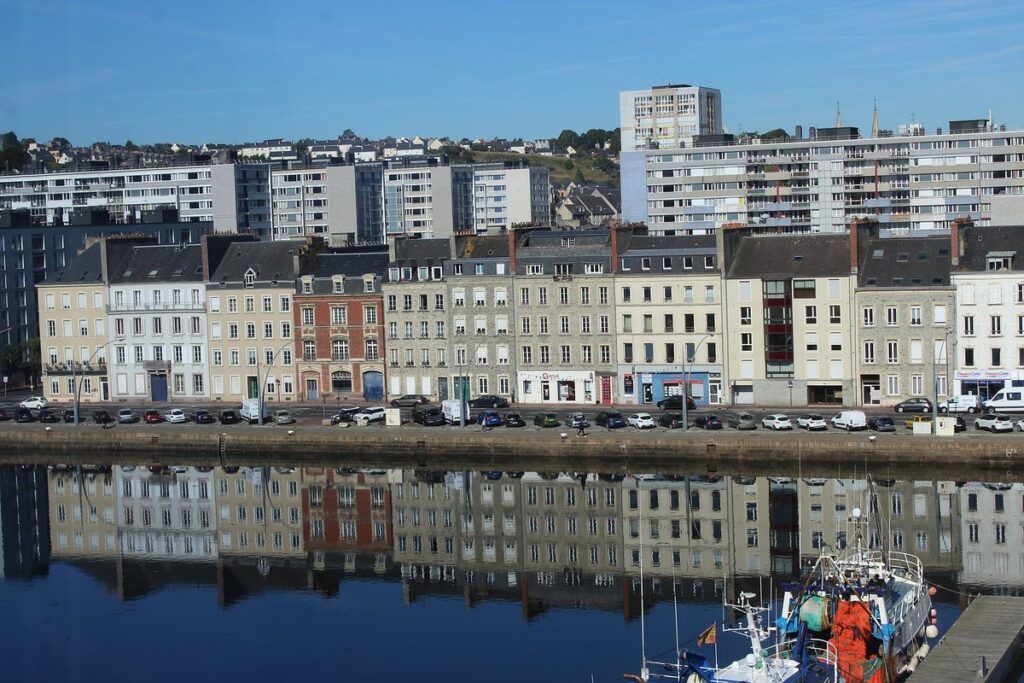
The downtown area is compact and walkable. Most historic spots are within 20 minutes on foot from the port or train station.
To visit the D-Day beaches, guided tours are a good bet if you don’t have a car. Several outfits offer day trips with knowledgeable guides who really know their stuff.
Check available accommodations in Cherbourg.
Recommended Itineraries
One-Day Visit:
- Morning: Hit La Cité de la Mer to get your bearings on Cherbourg’s naval story
- Lunch: Grab fresh seafood at a harbor café
- Afternoon: Take a guided walk through WWII sites in the city
- Evening: Head up to Fort du Roule for sunset views over the port

Two-Day Visit:
- Day One: Dive into Cherbourg’s city sights
- Day Two: Join a D-Day beaches tour—Utah Beach, Sainte-Mère-Église, and the American Cemetery
Three-Day History-Focused Itinerary:
- Day 1: Explore Cherbourg’s maritime and WWII history
- Day 2: Visit Utah Beach and nearby sites
- Day 3: Head east to Omaha Beach and the American Cemetery
If you’re a history nerd, don’t rush La Cité de la Mer or the Liberation Museum. Give them at least half a day—they’re packed with stories and context about Cherbourg’s wartime role.
Recommended D-Day Tours:
- American D-Day Sites in Normandy Full-Day Tour
- American D-Day Sites in Normandy Half-Day Tour
- Half-Day Normandy WWII Sidecar Tour
- Full-Day US Battlefields of Normandy Tour
Find comfortable stays within moments of historic battlegrounds

